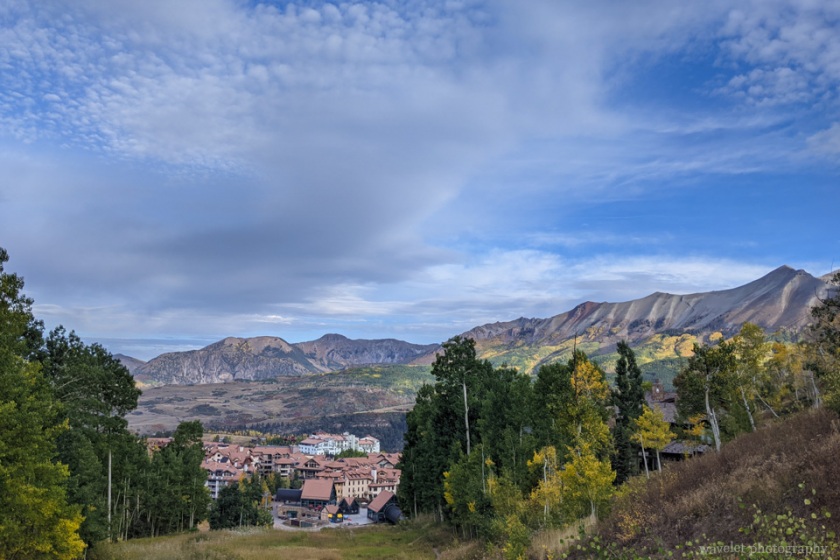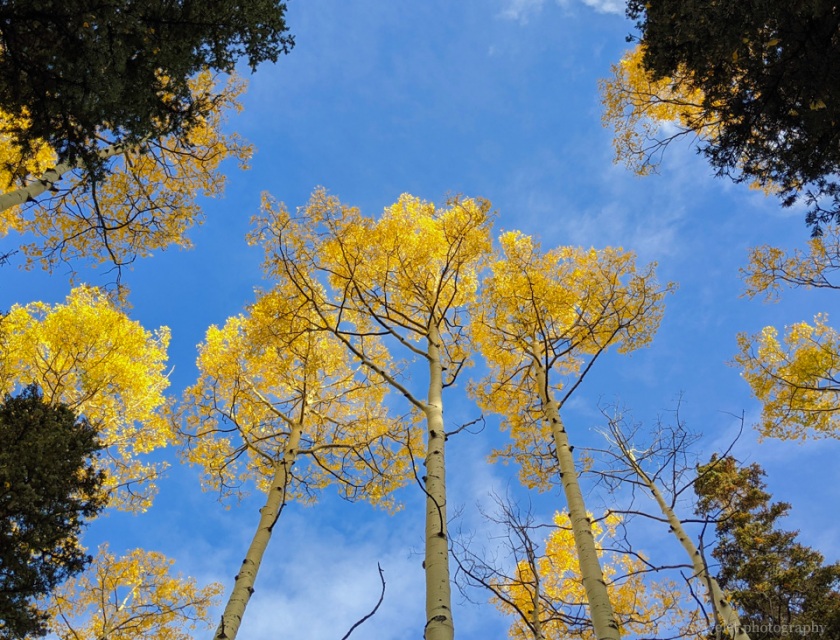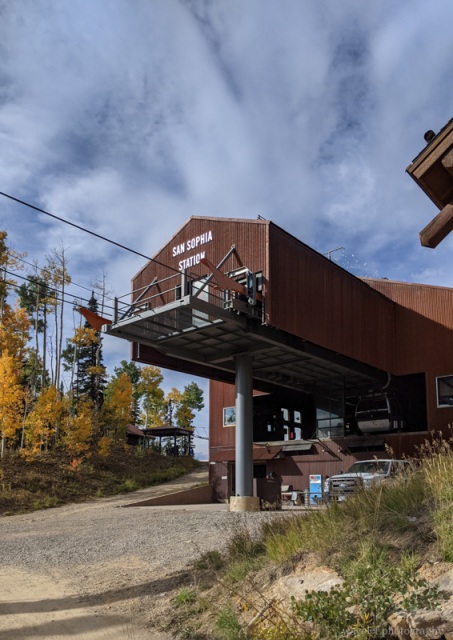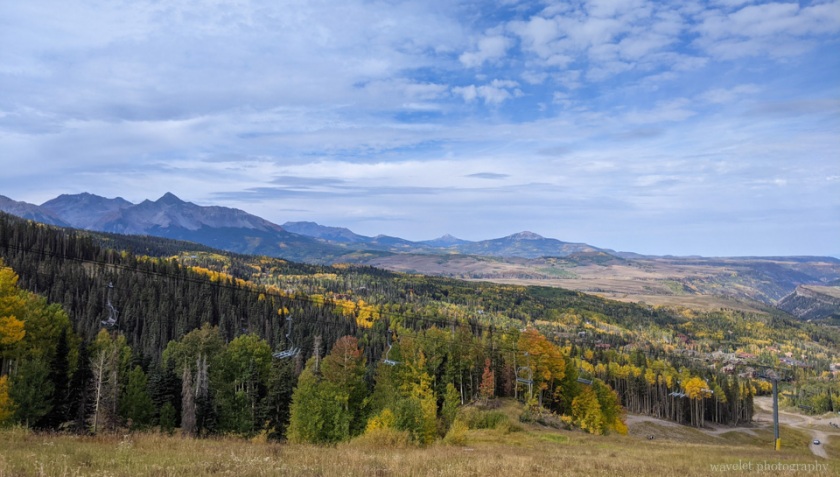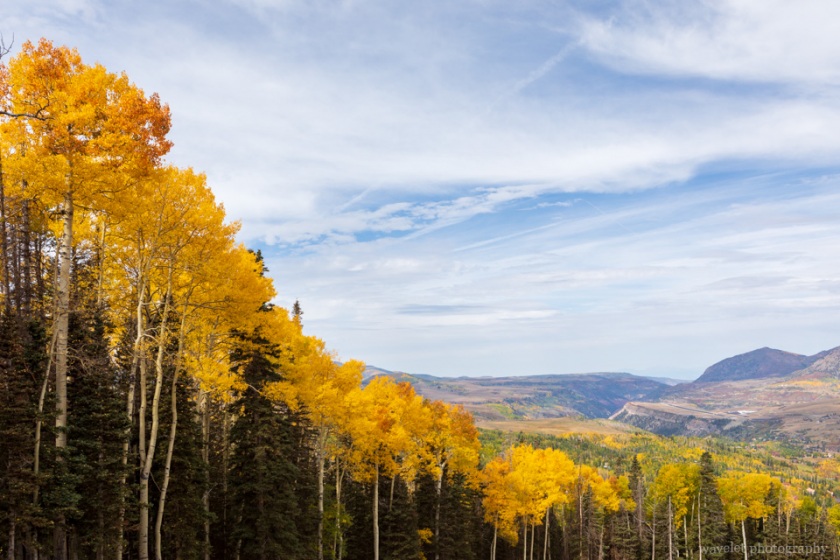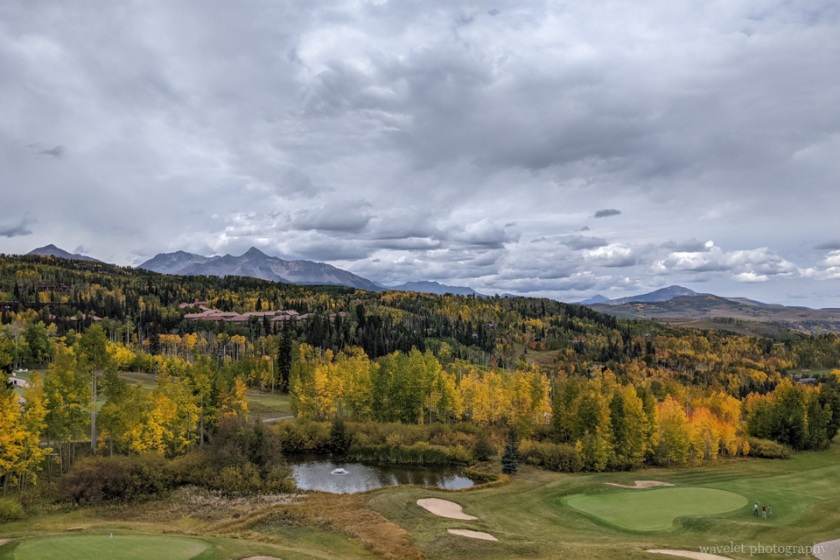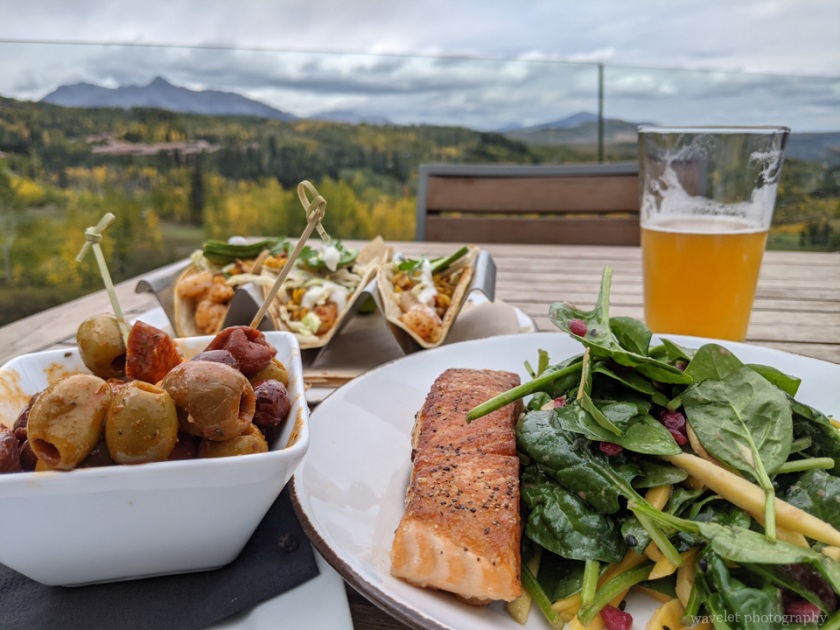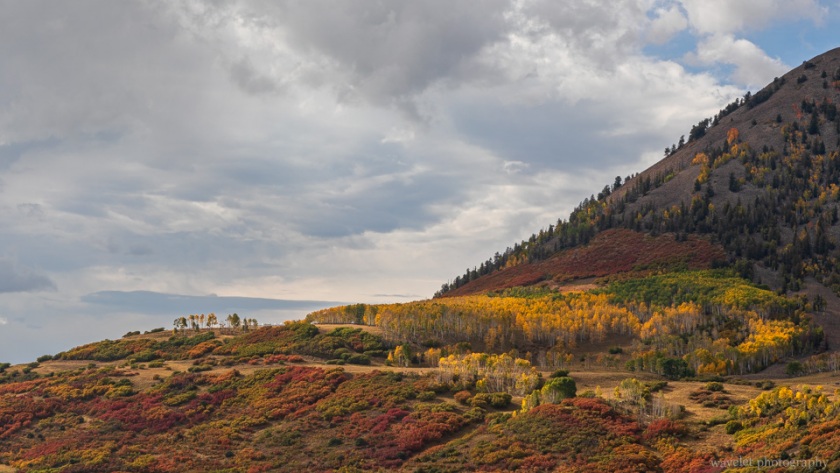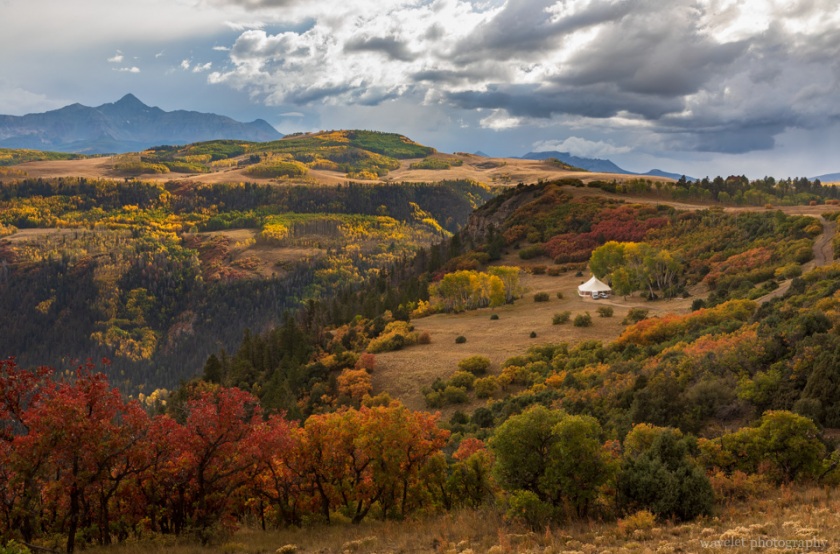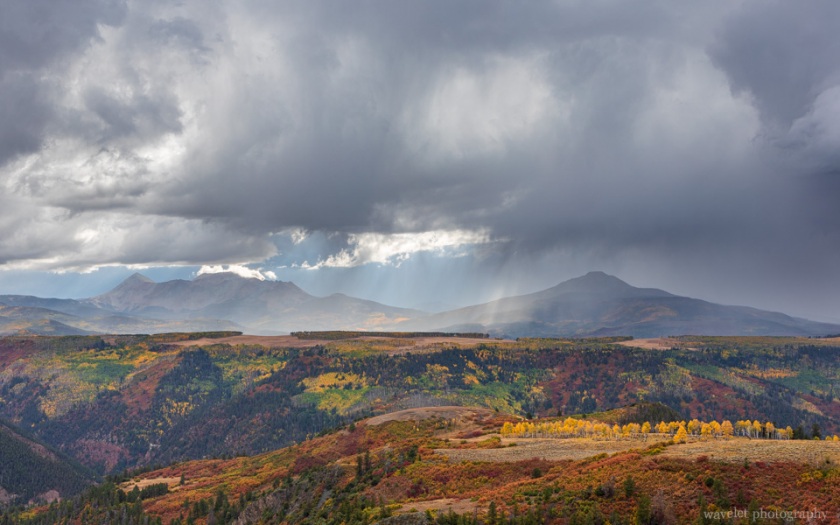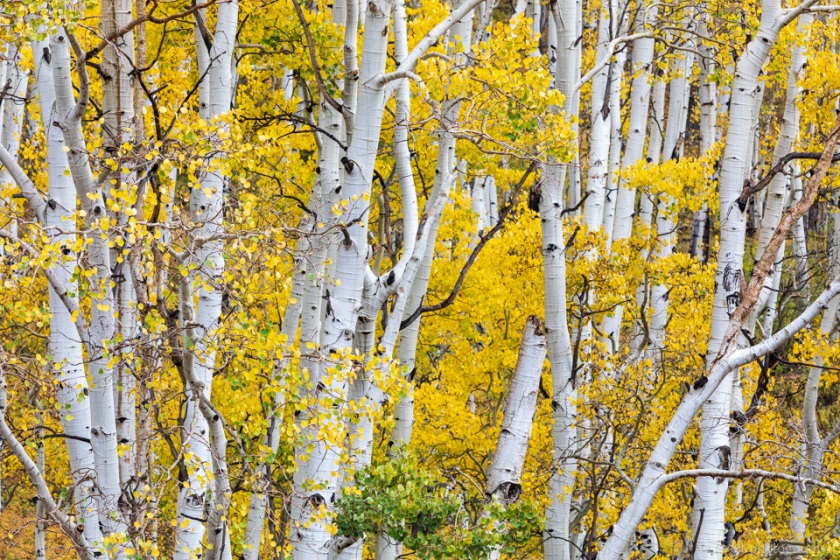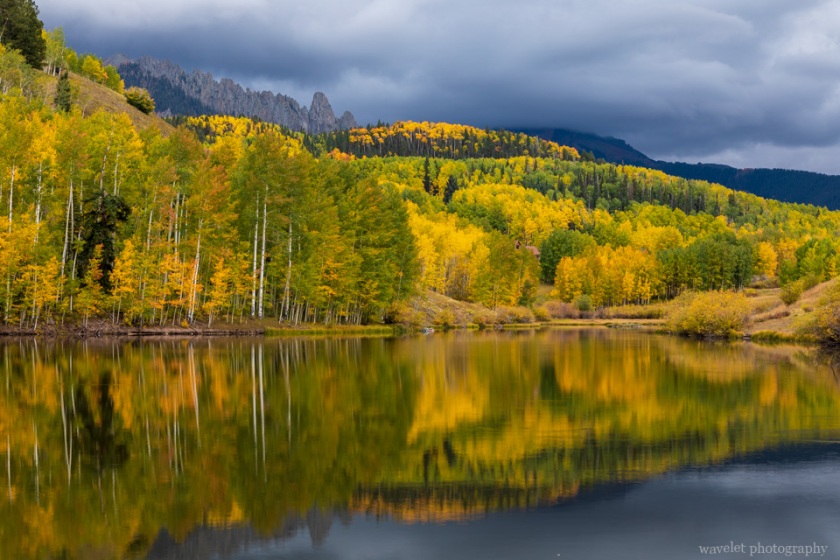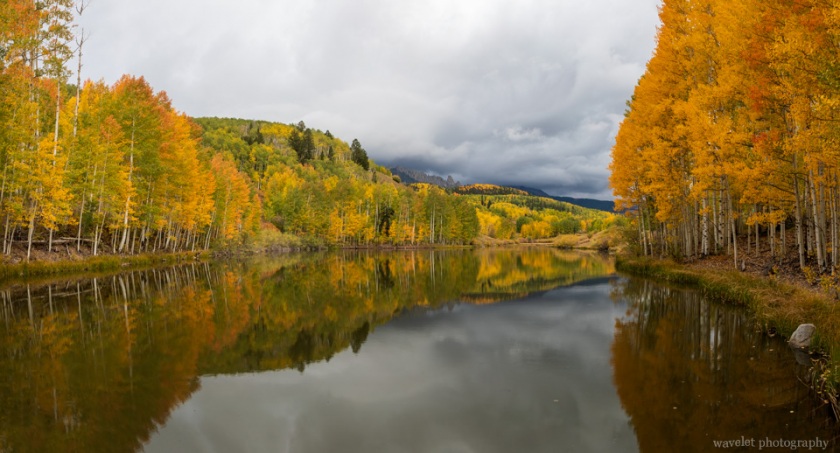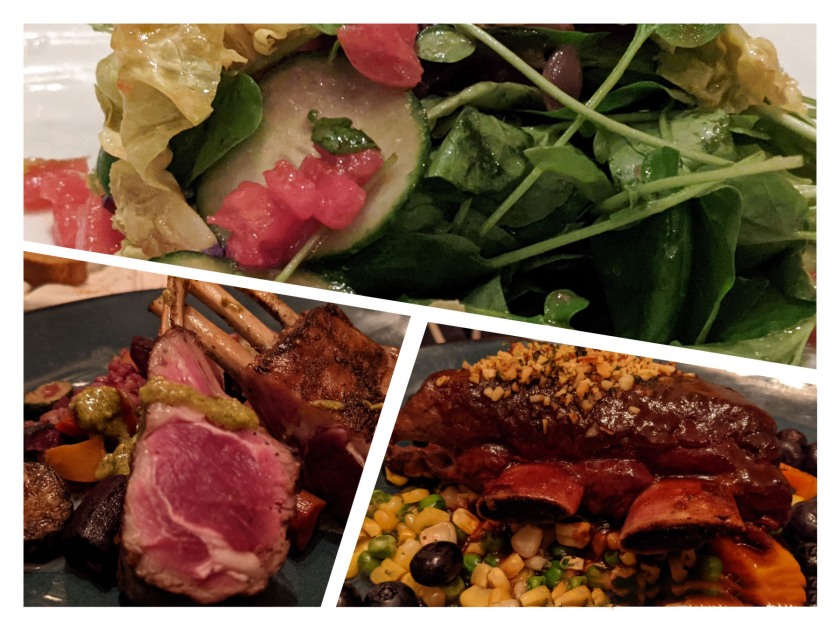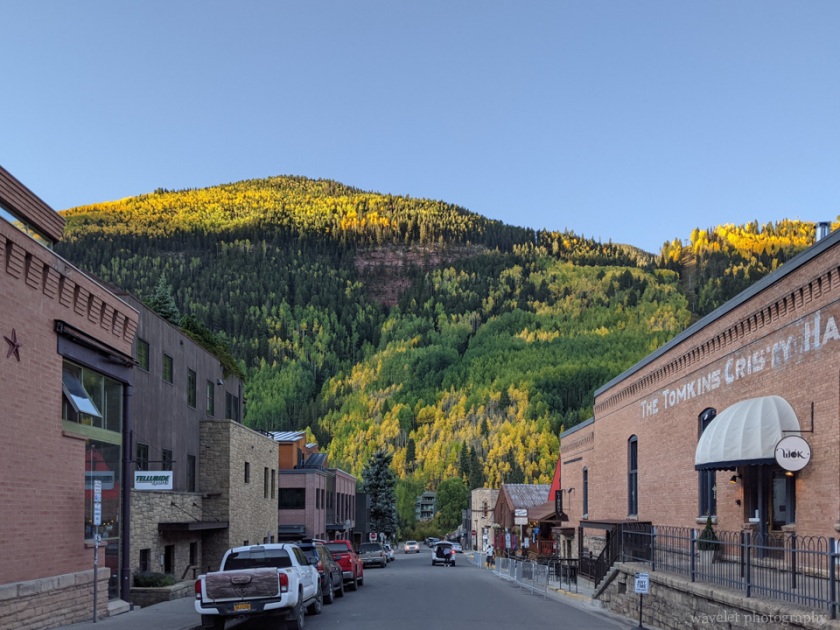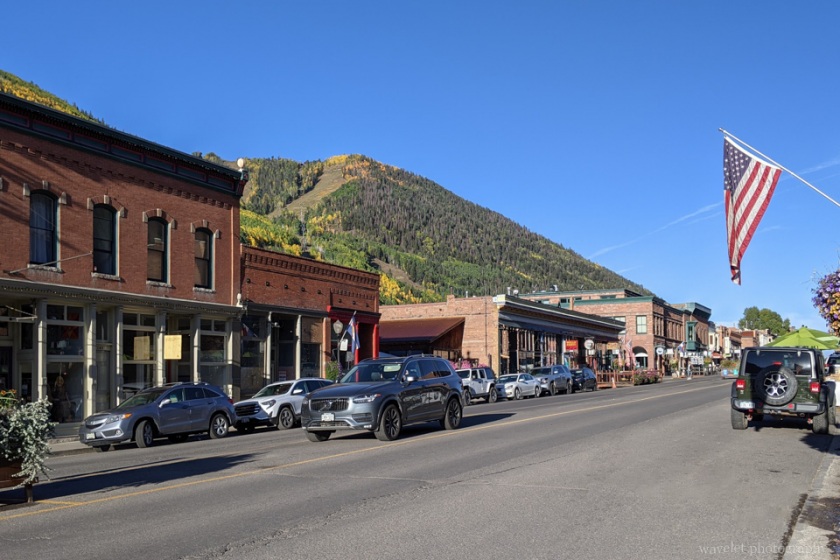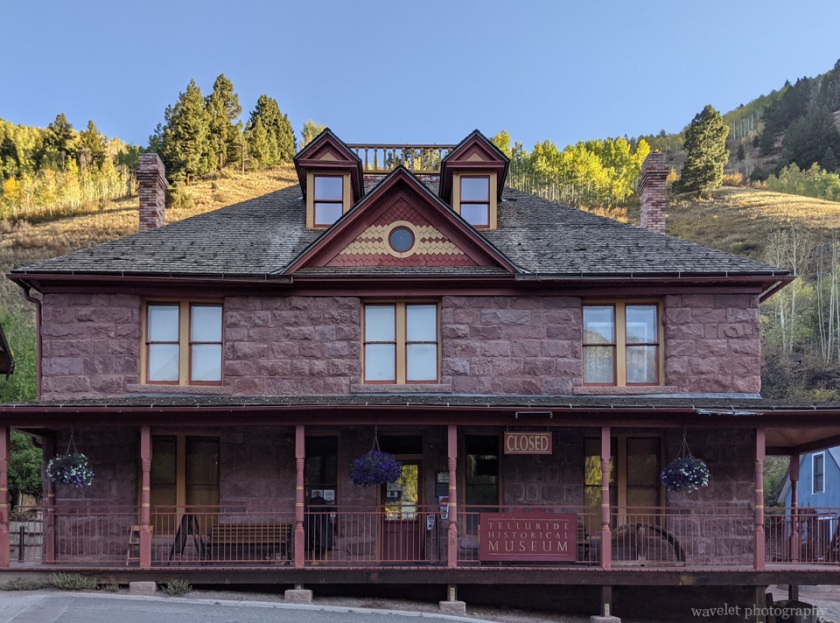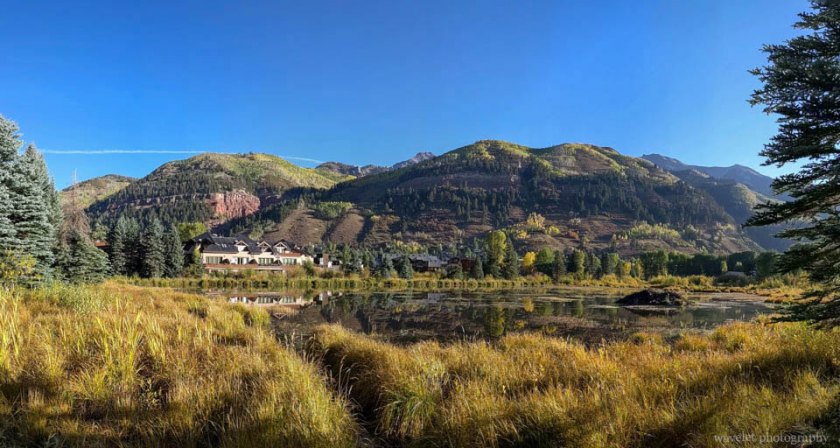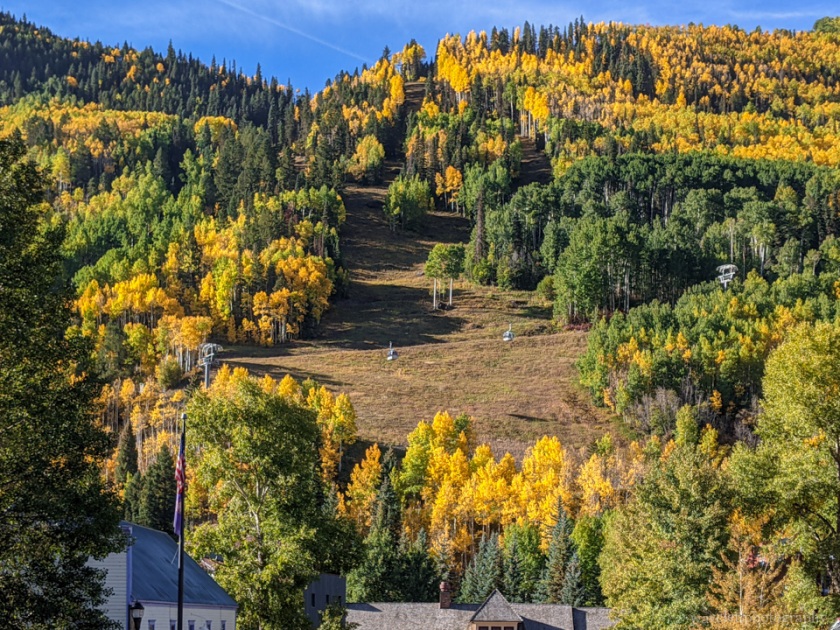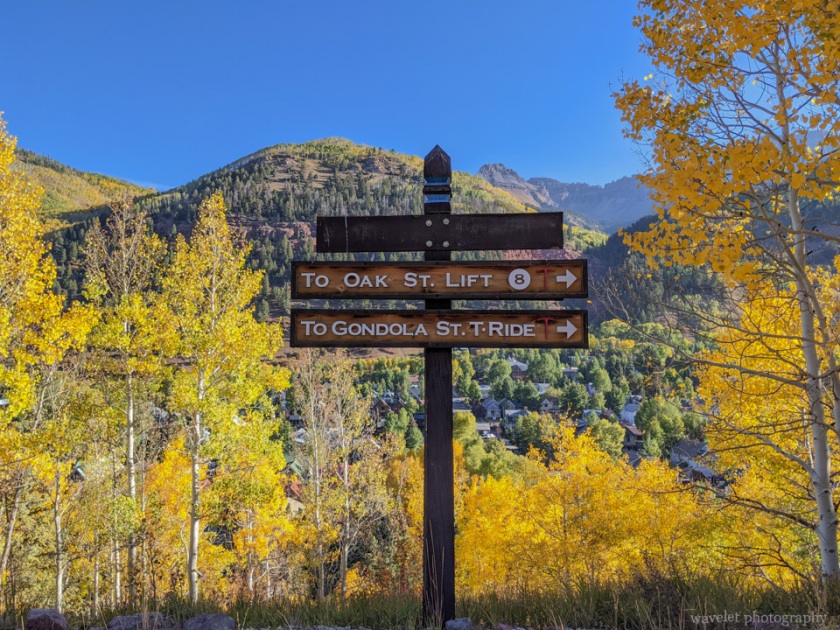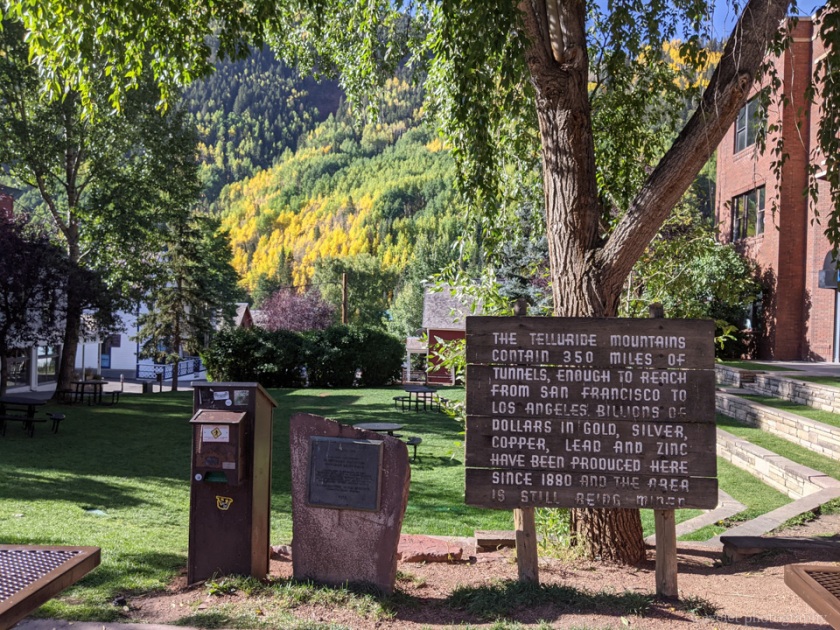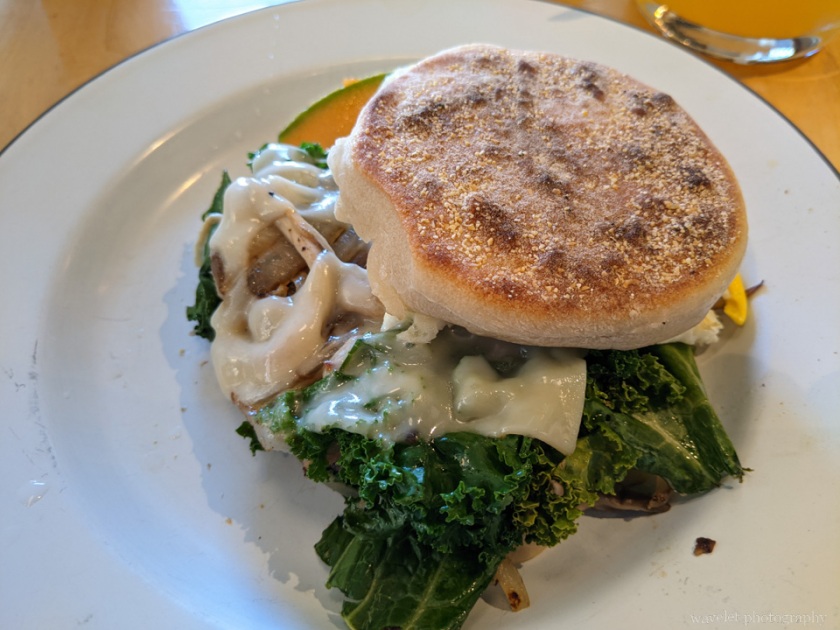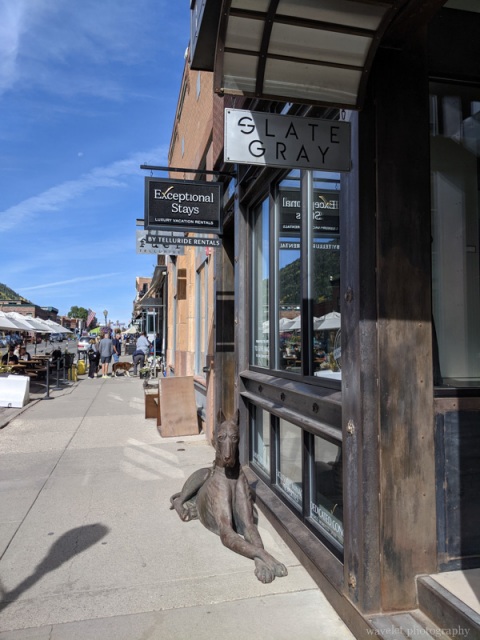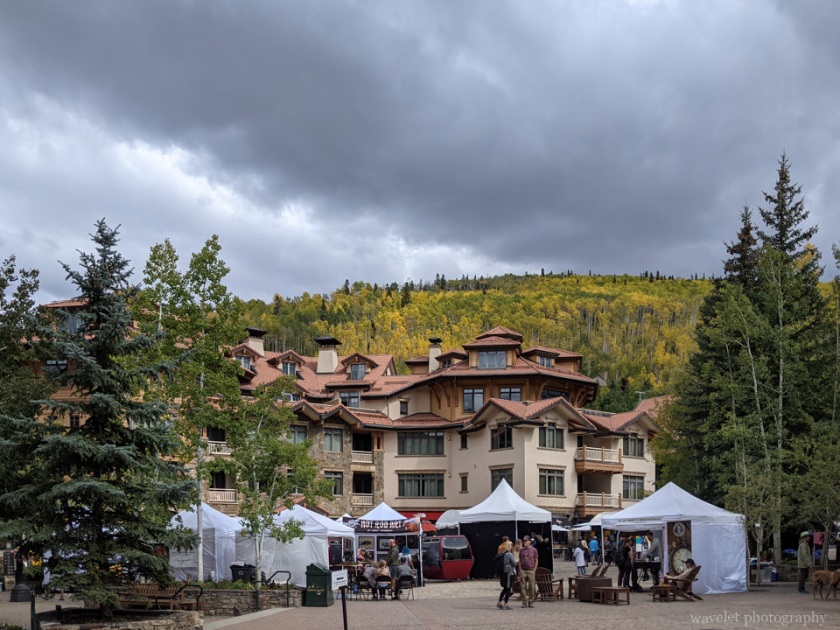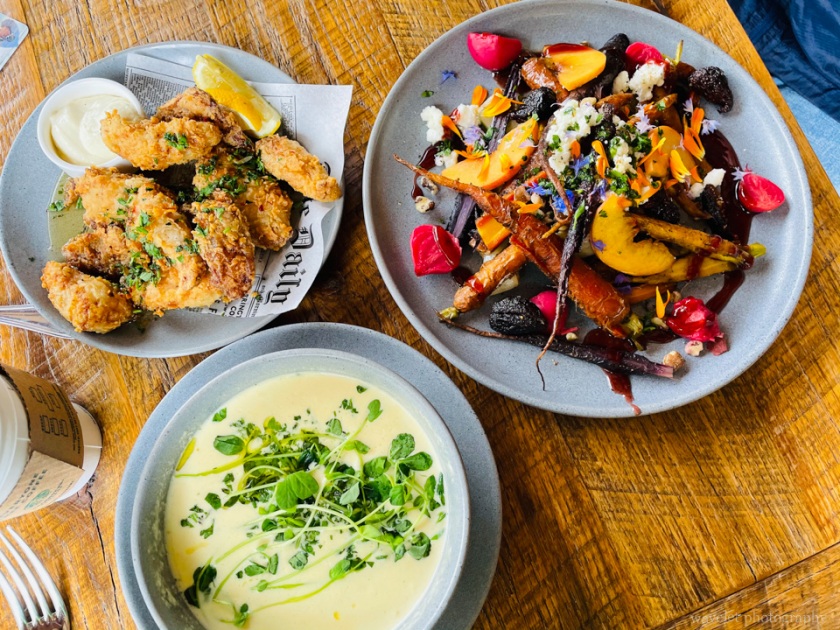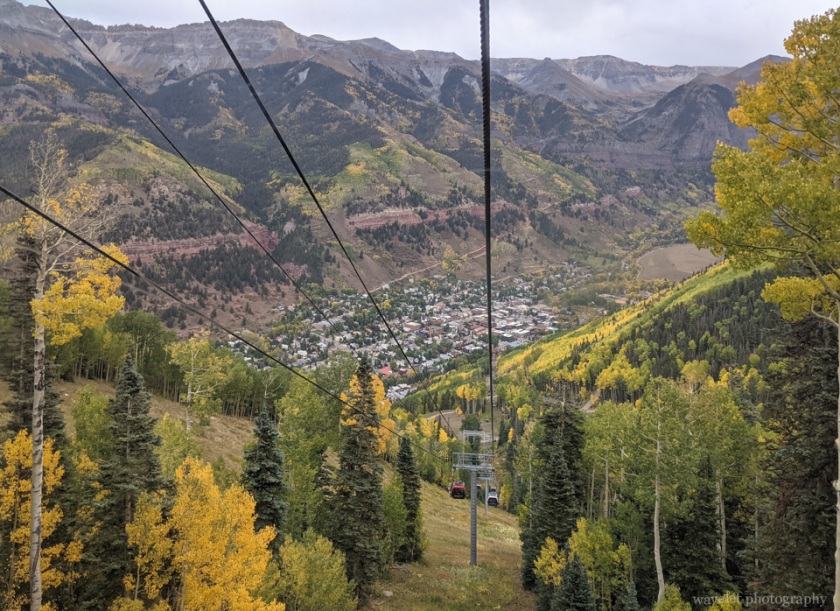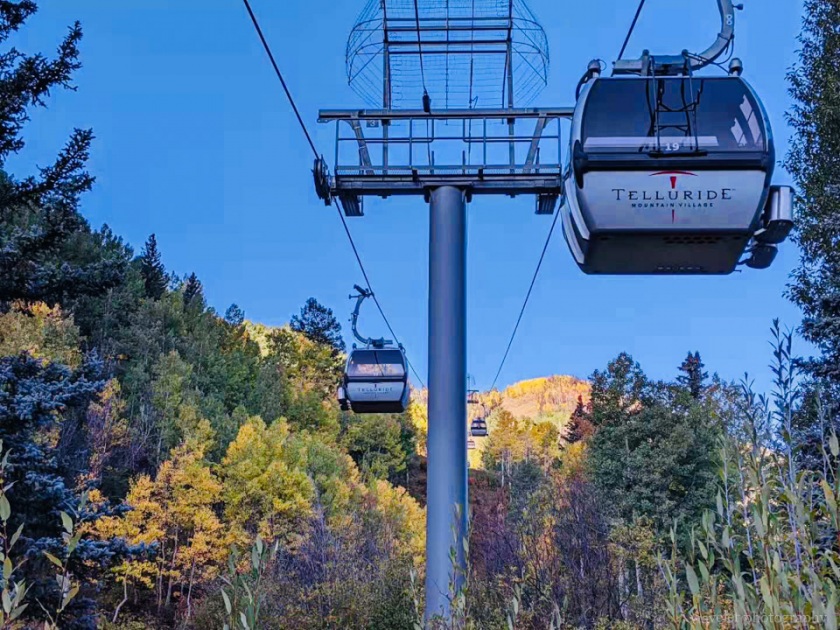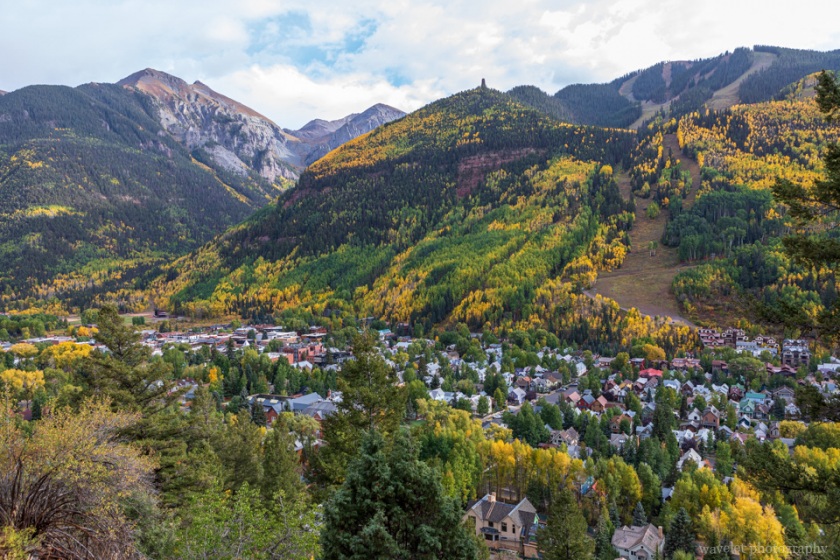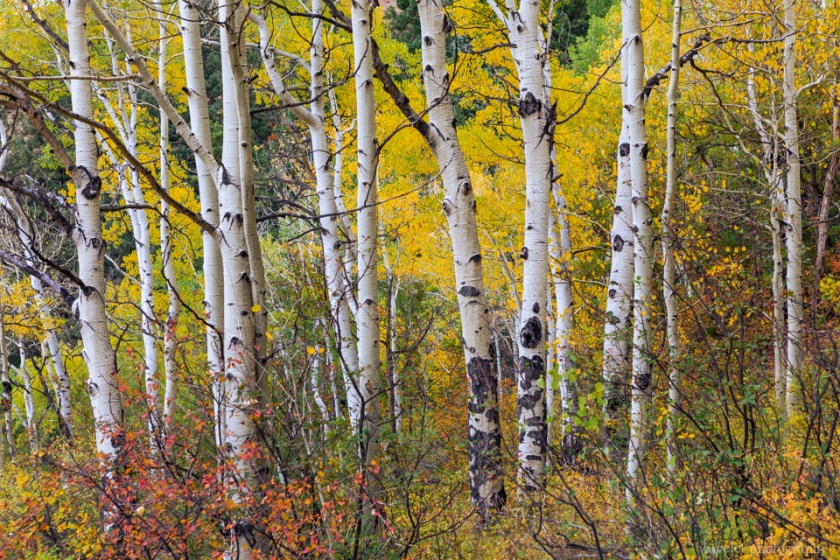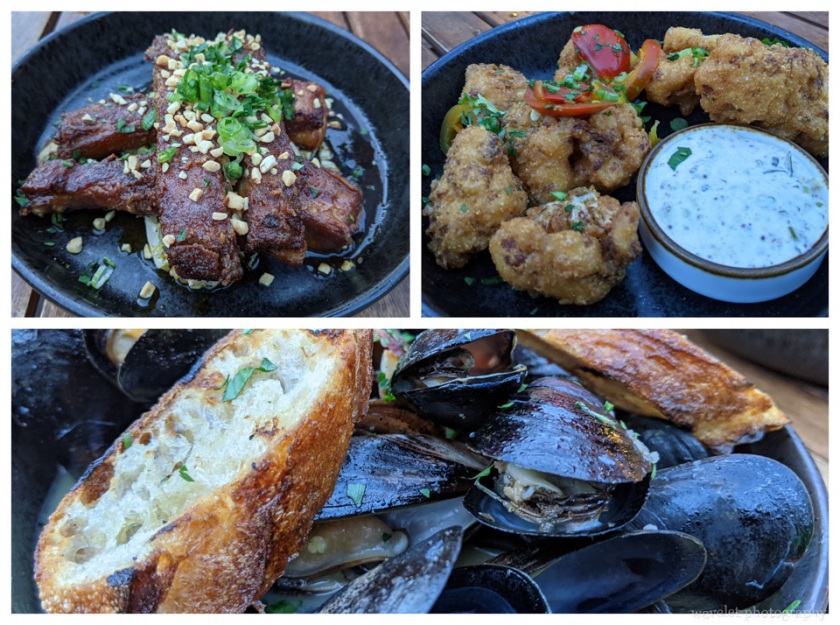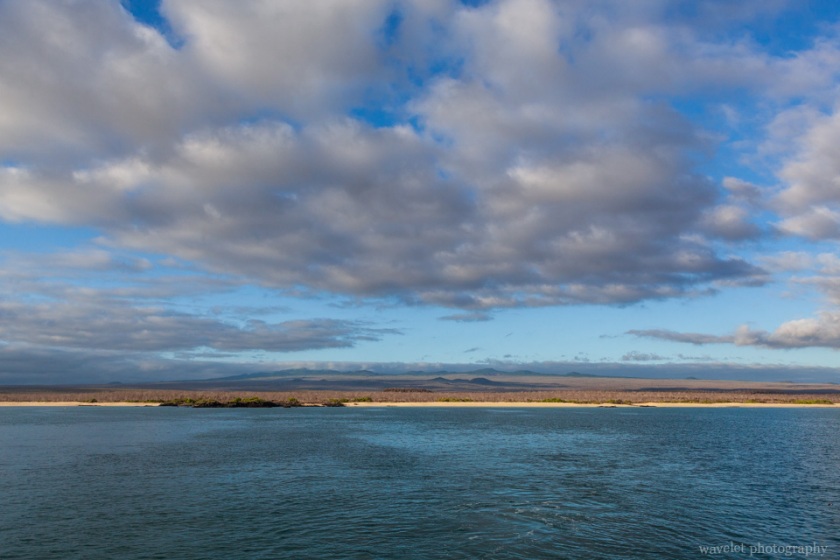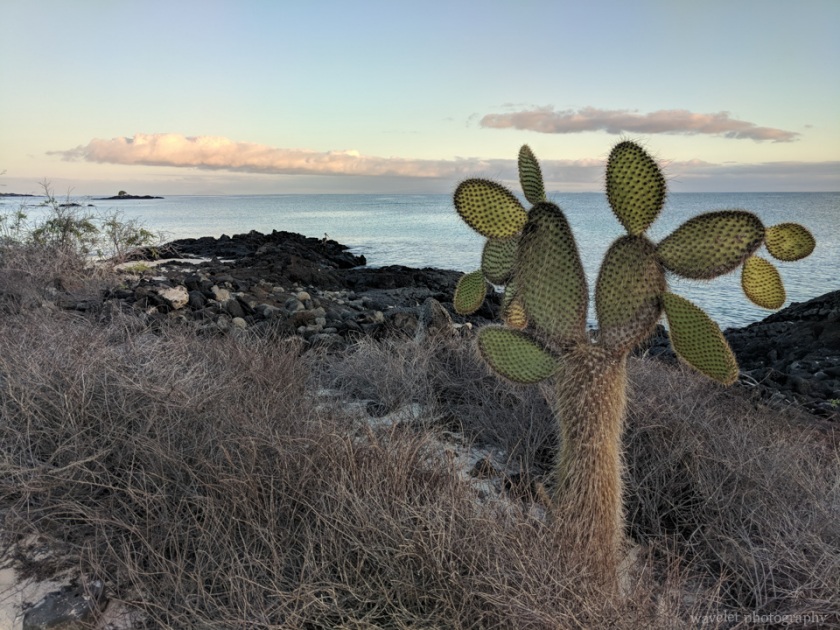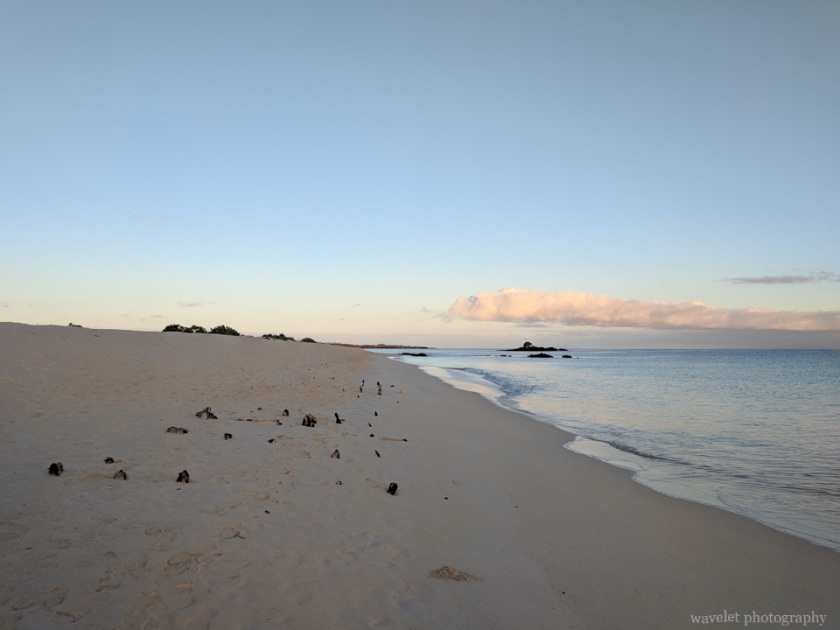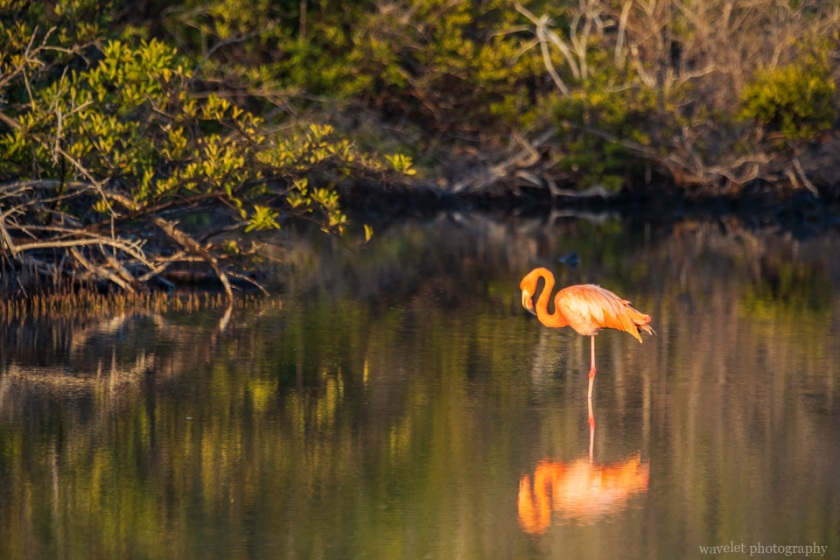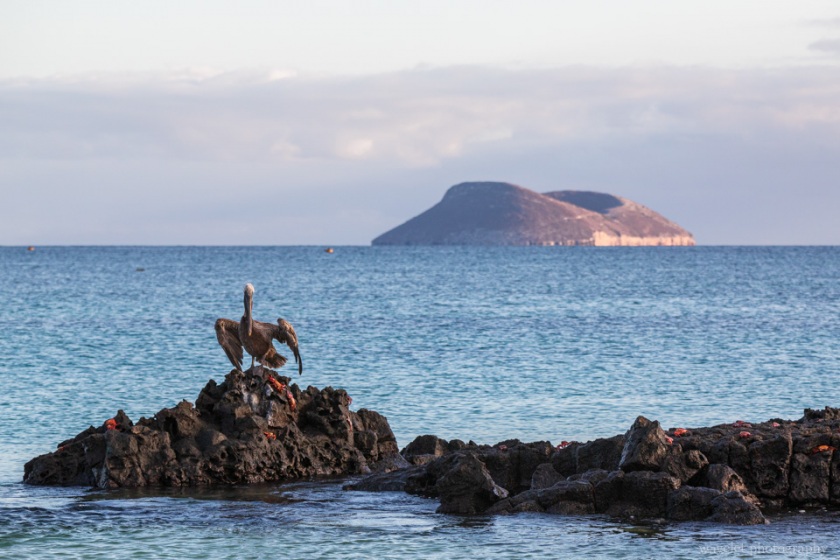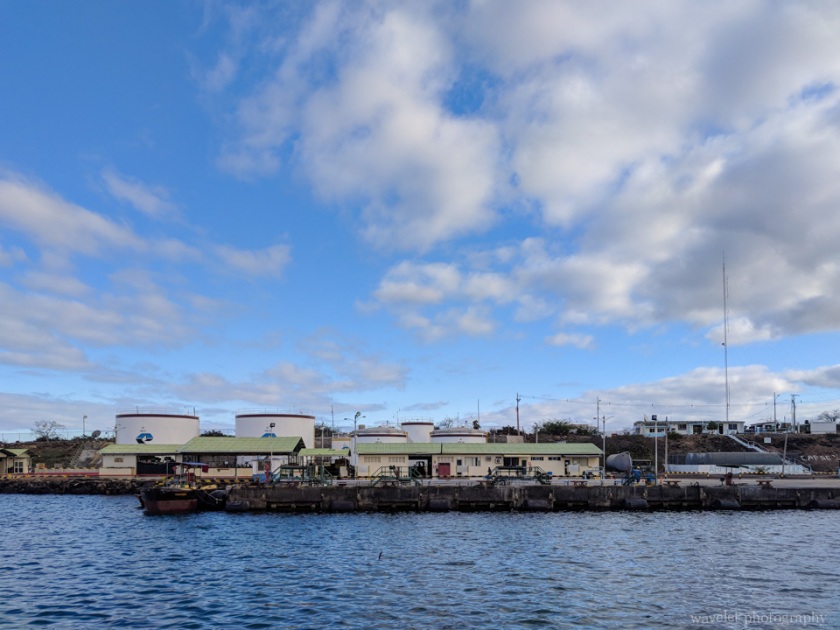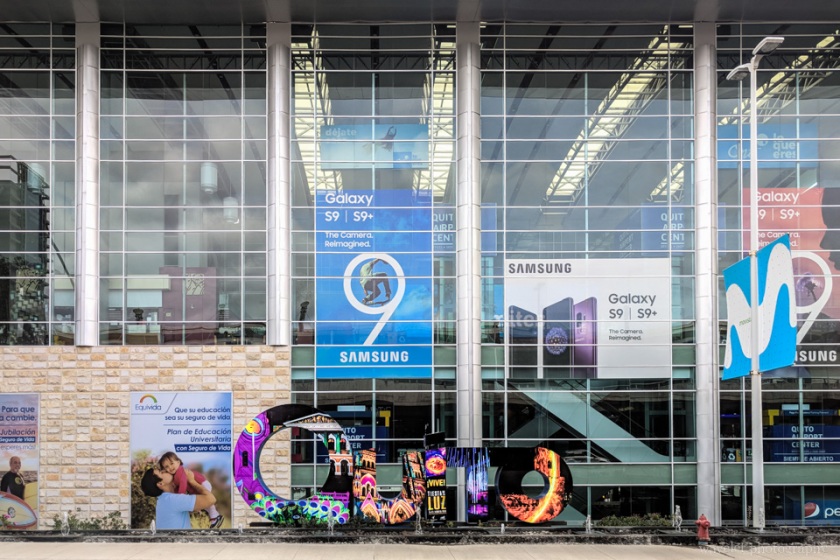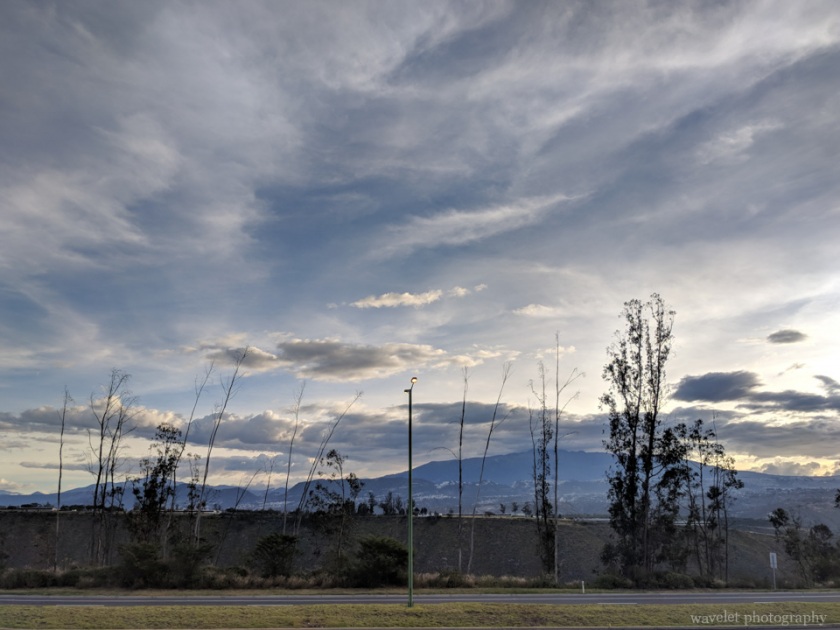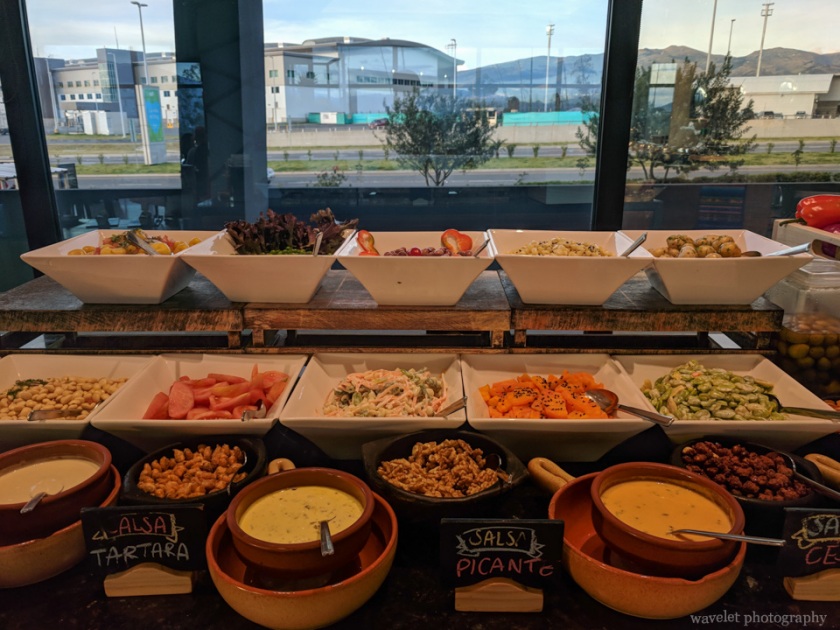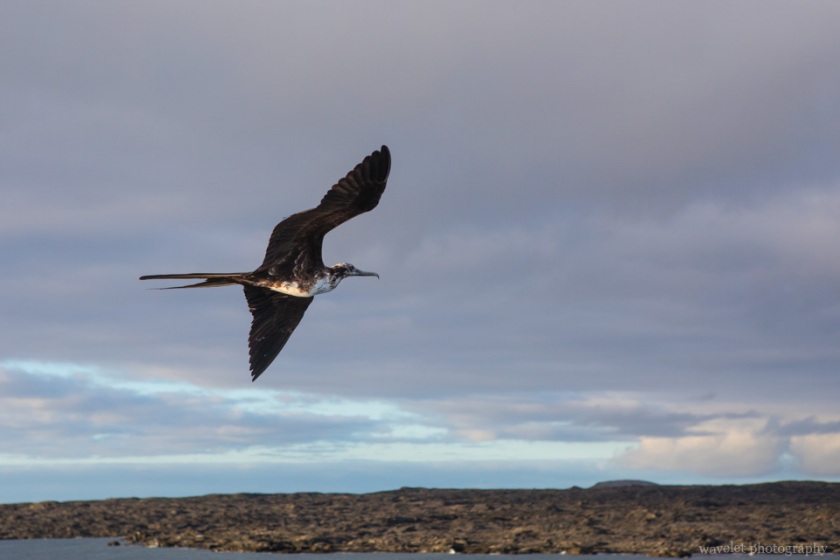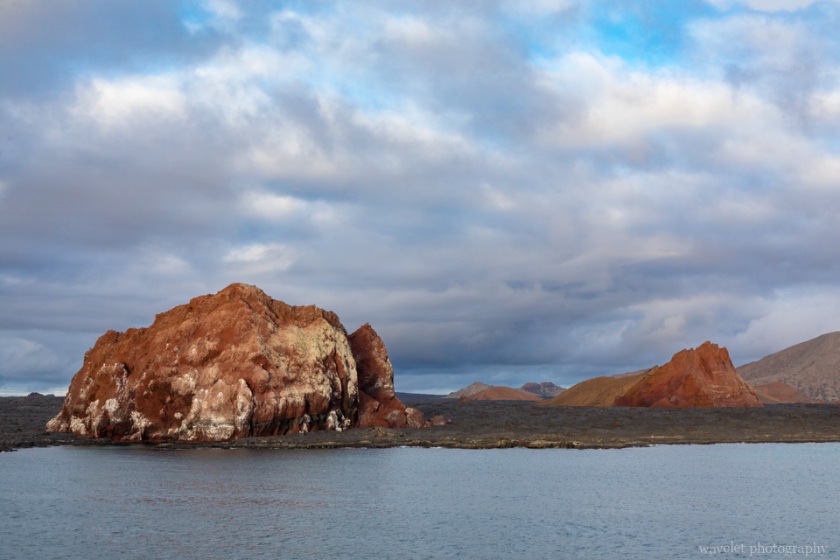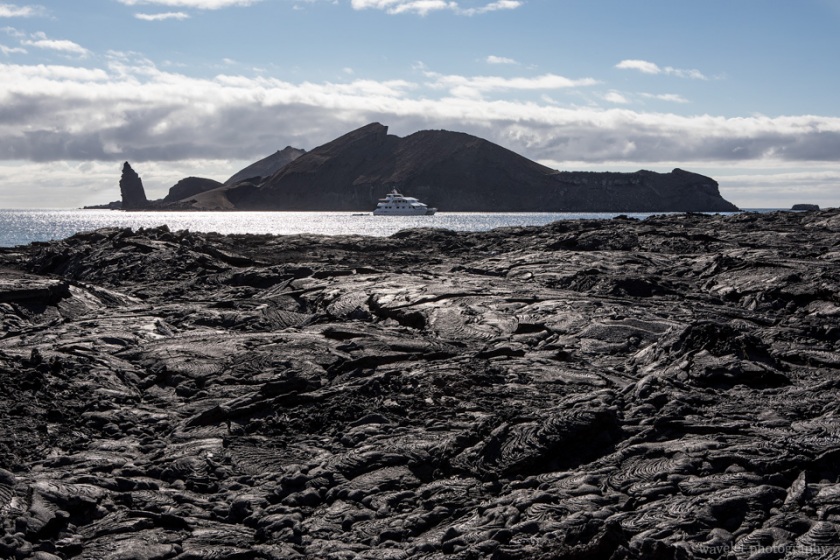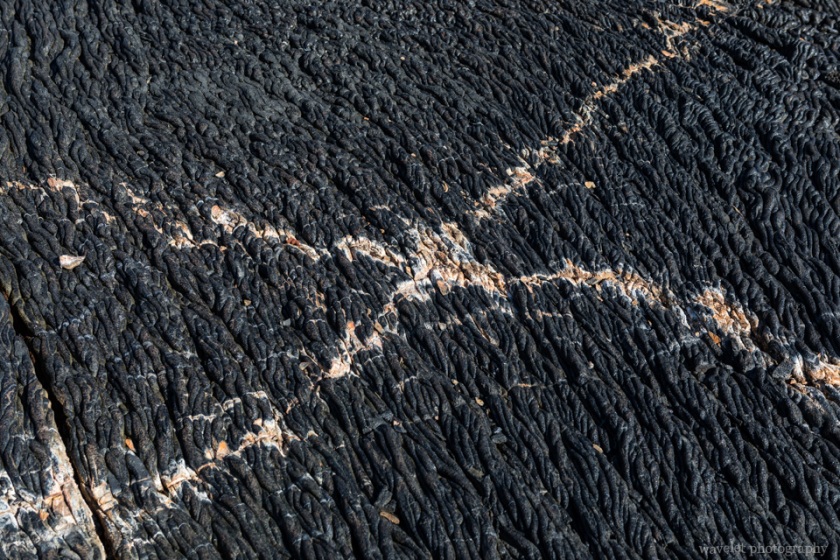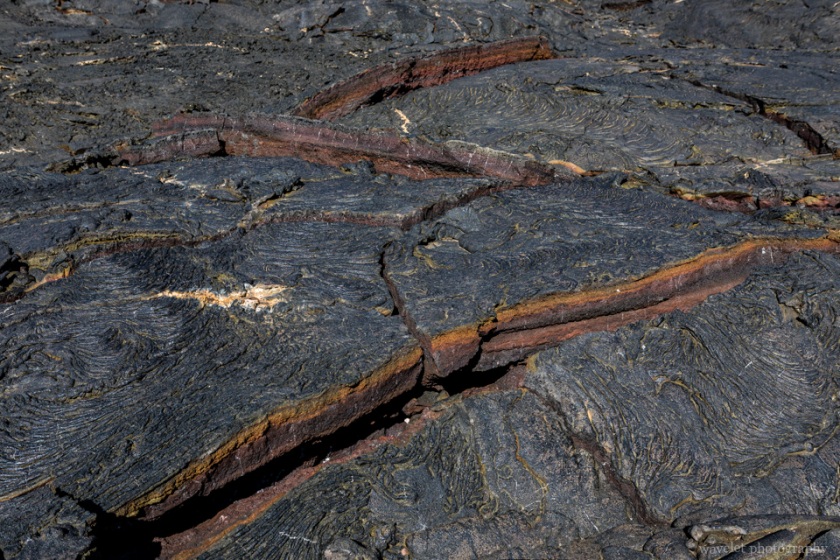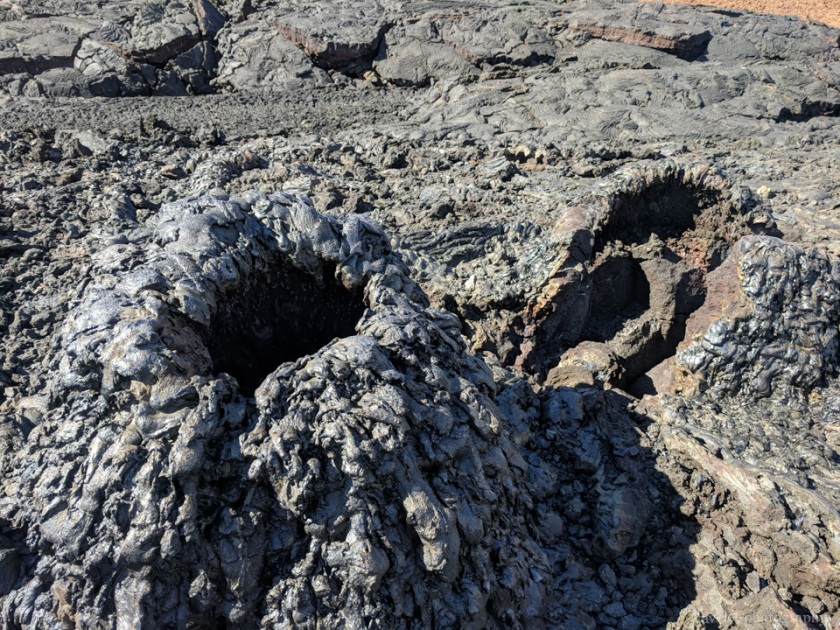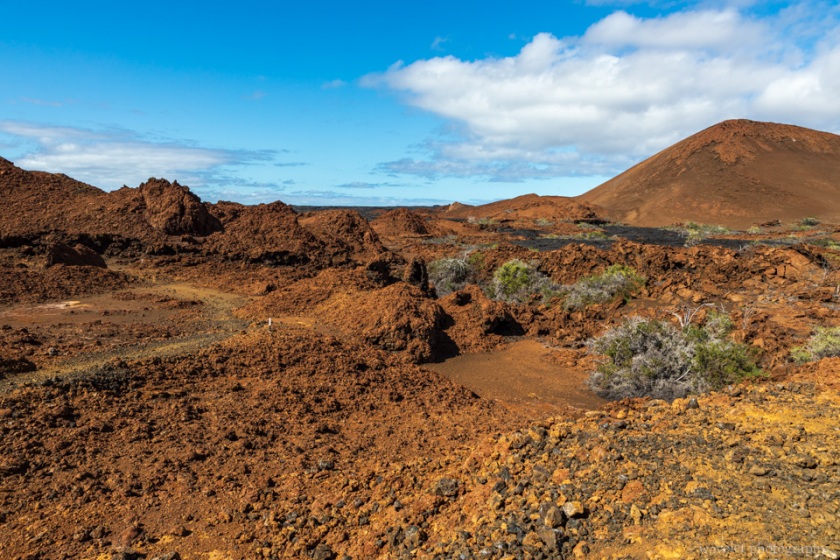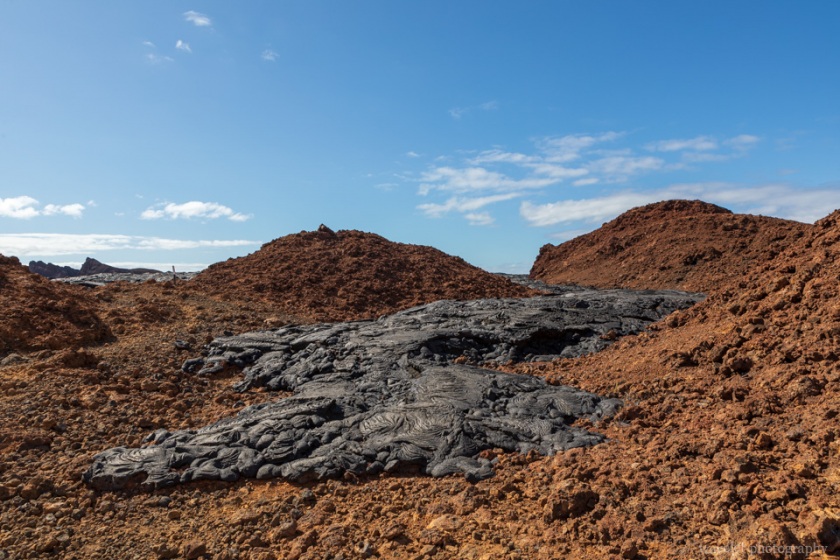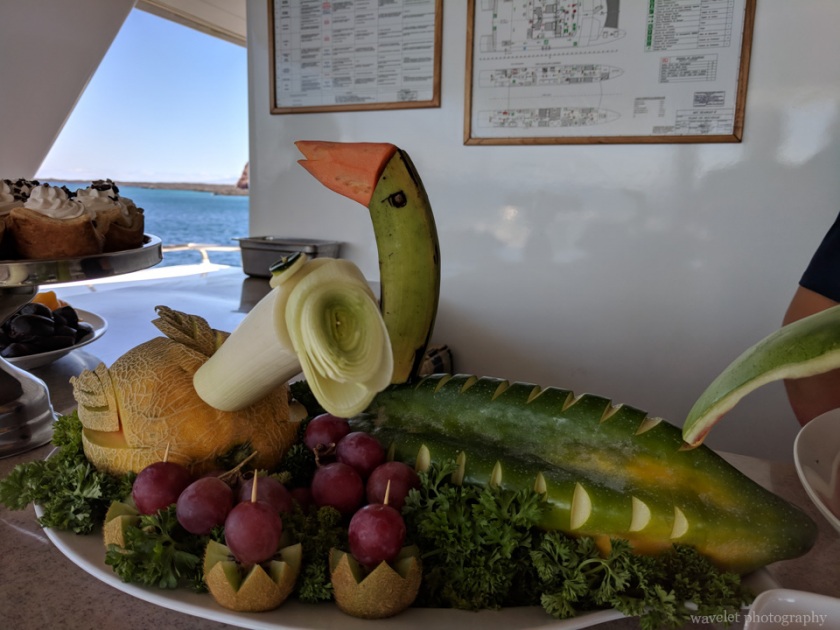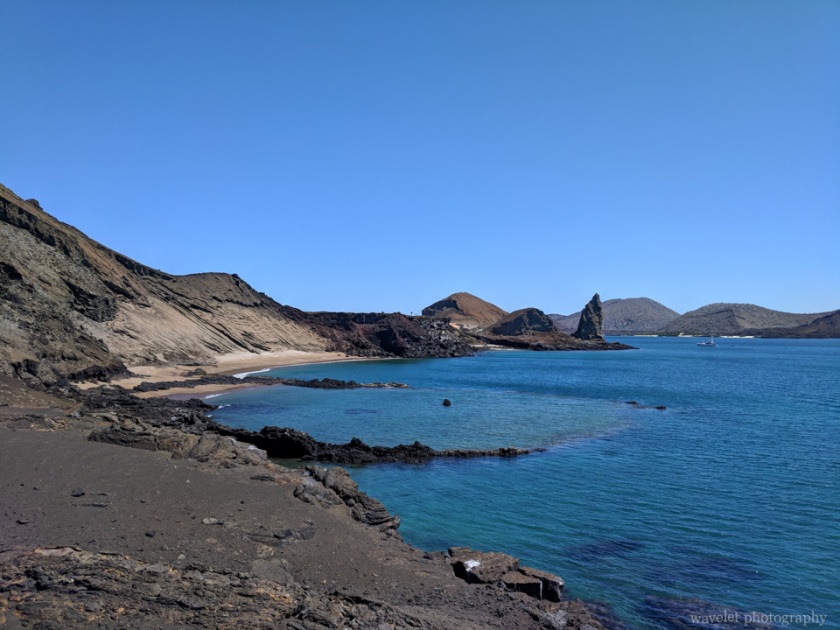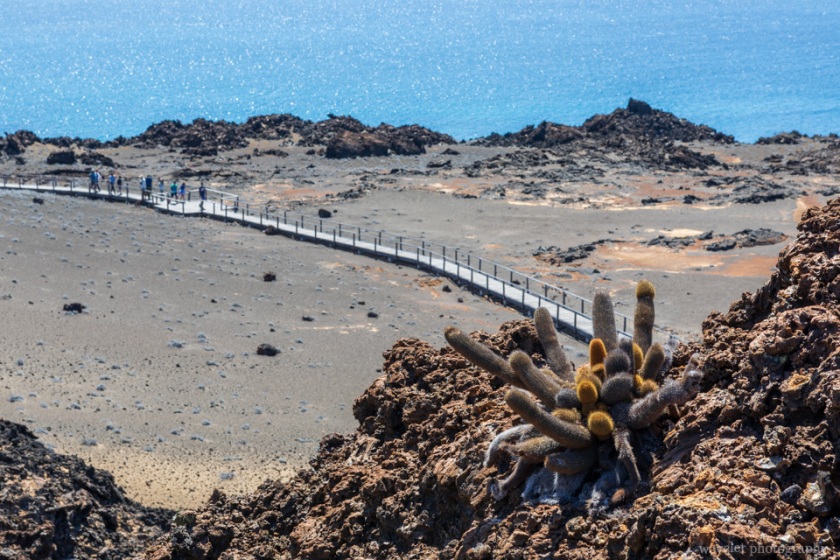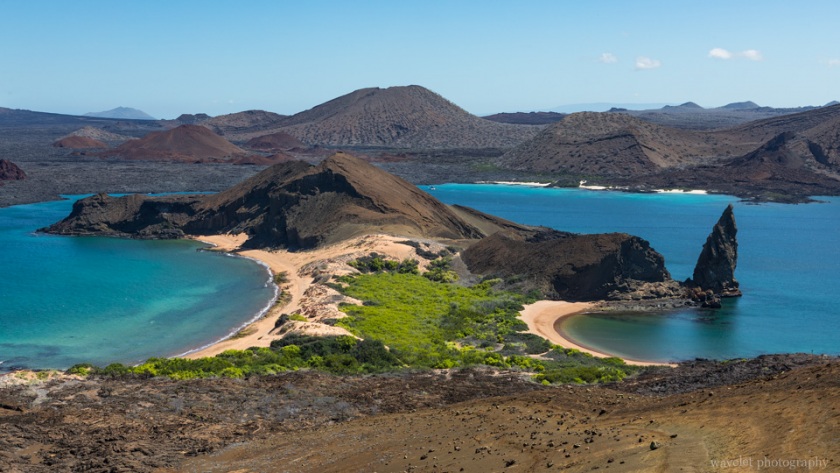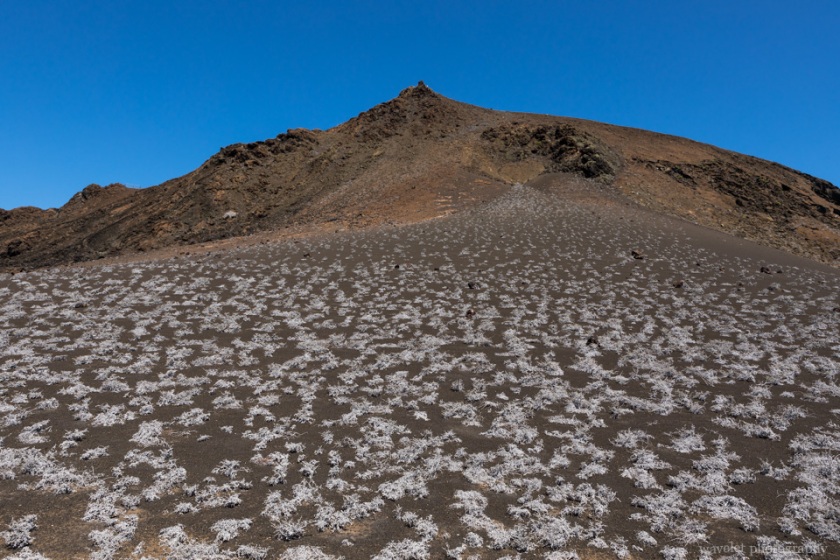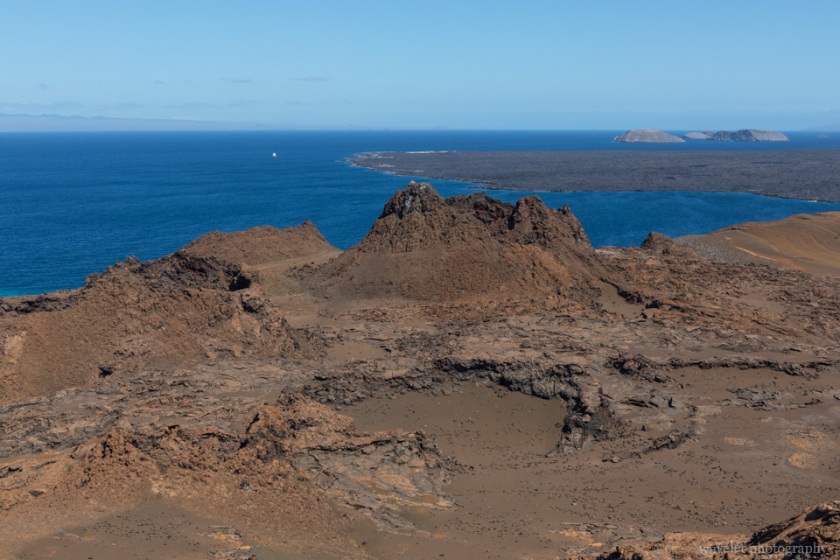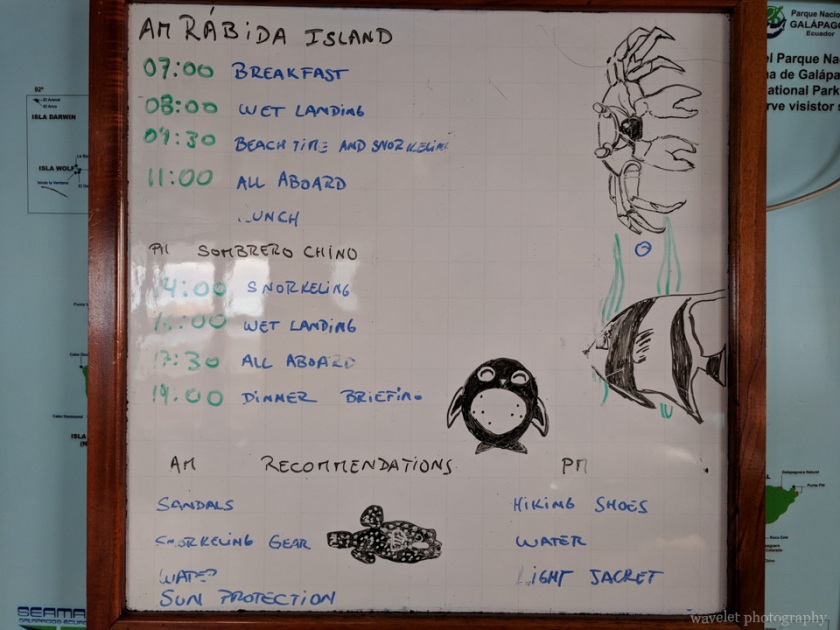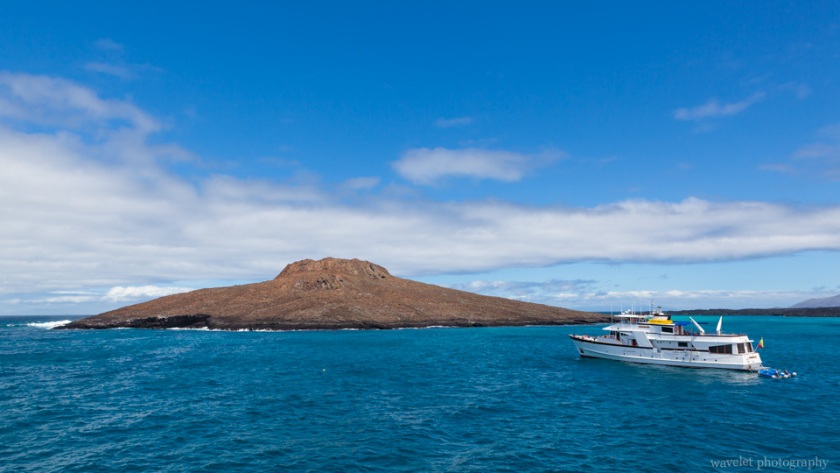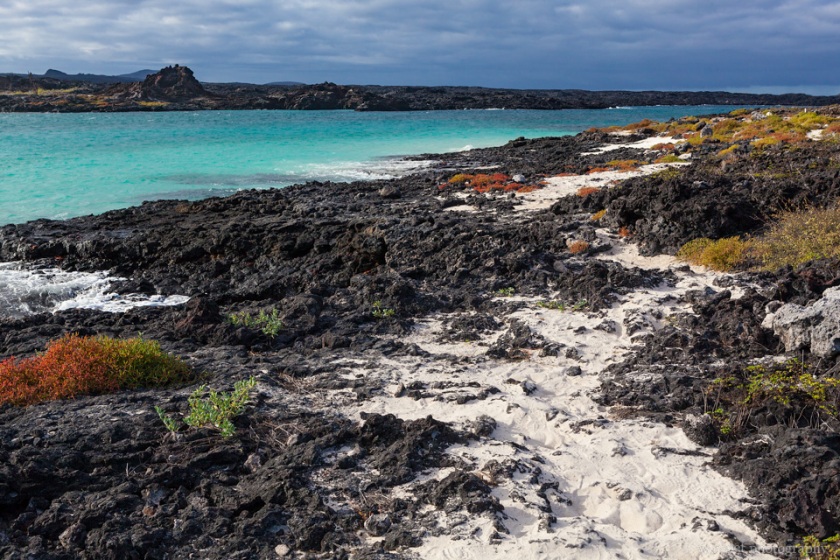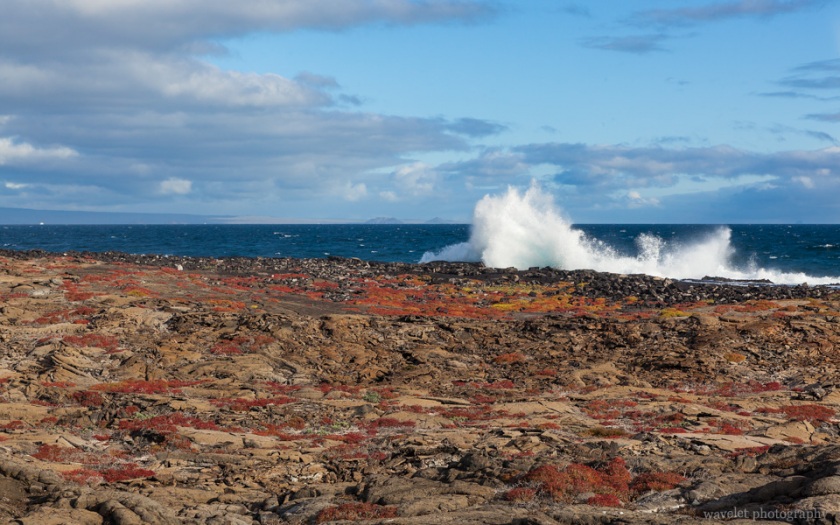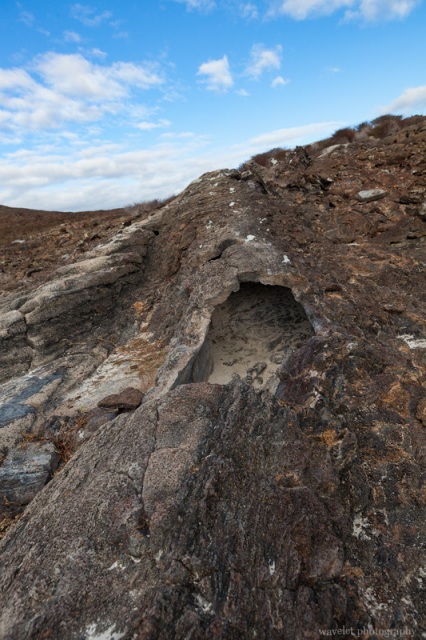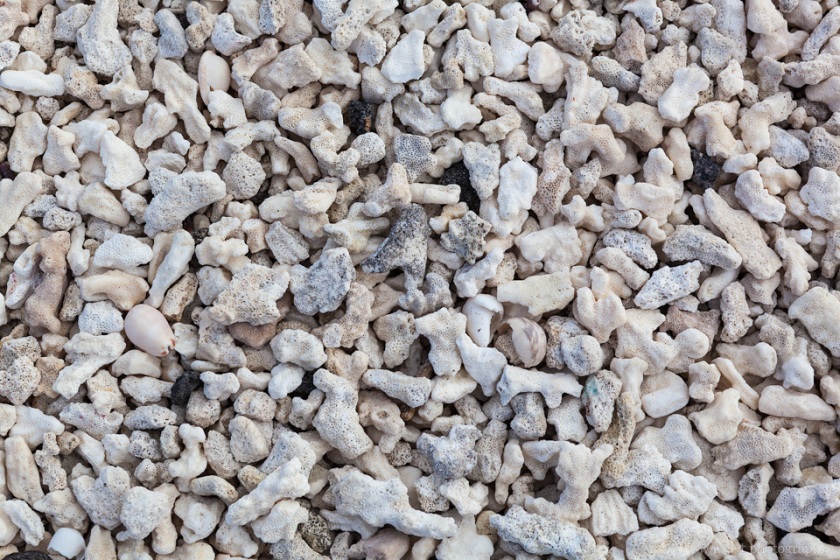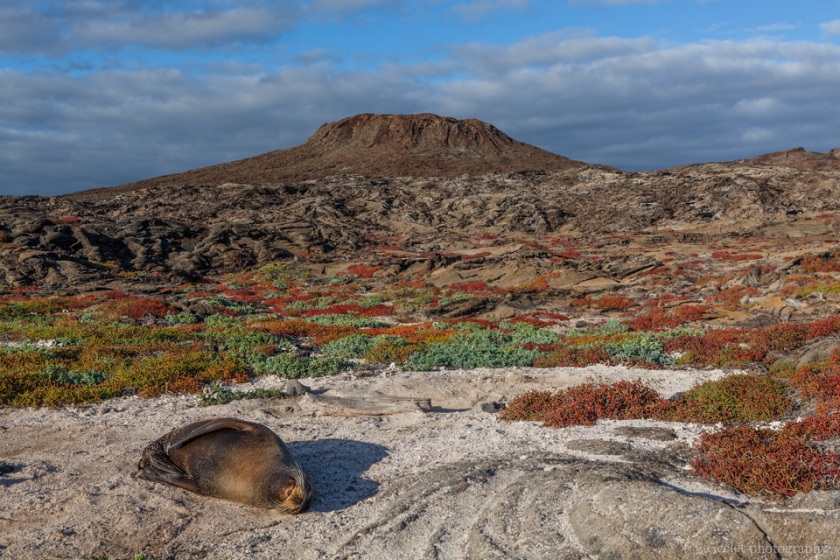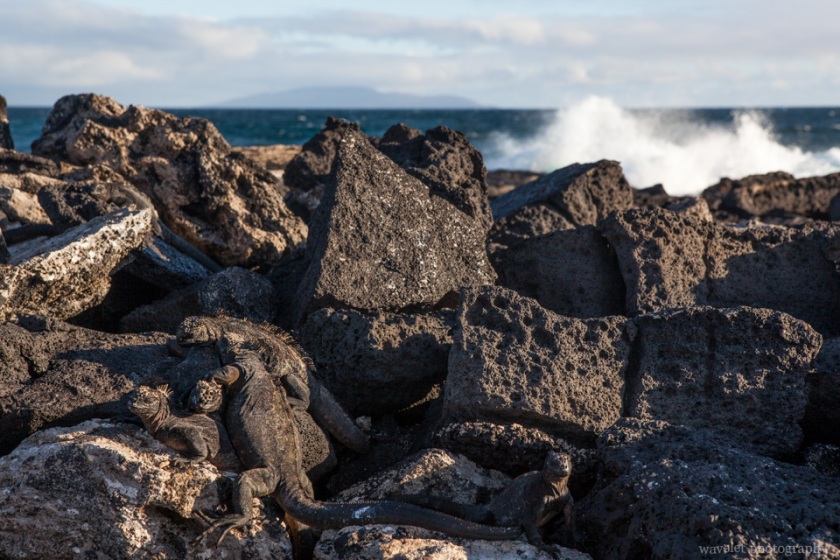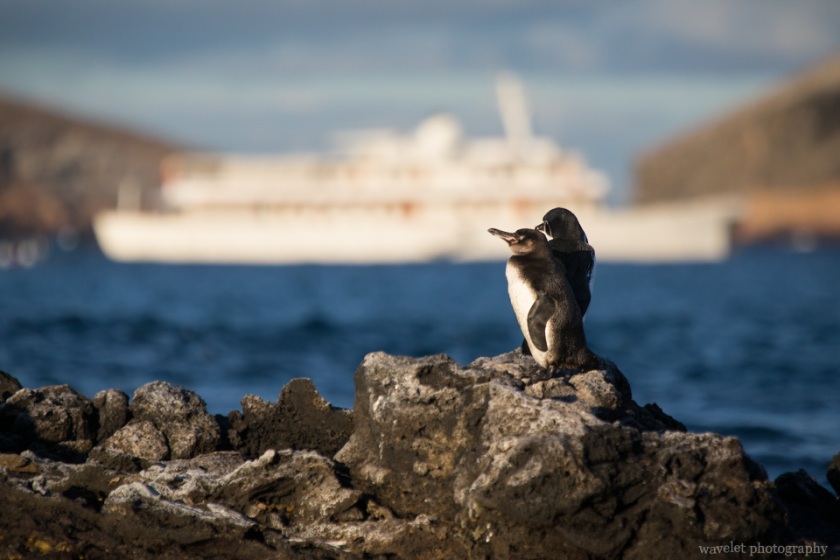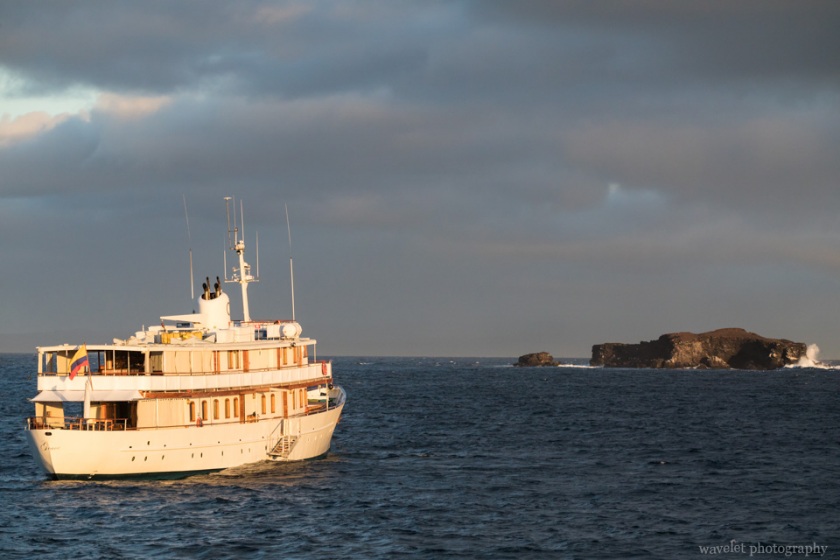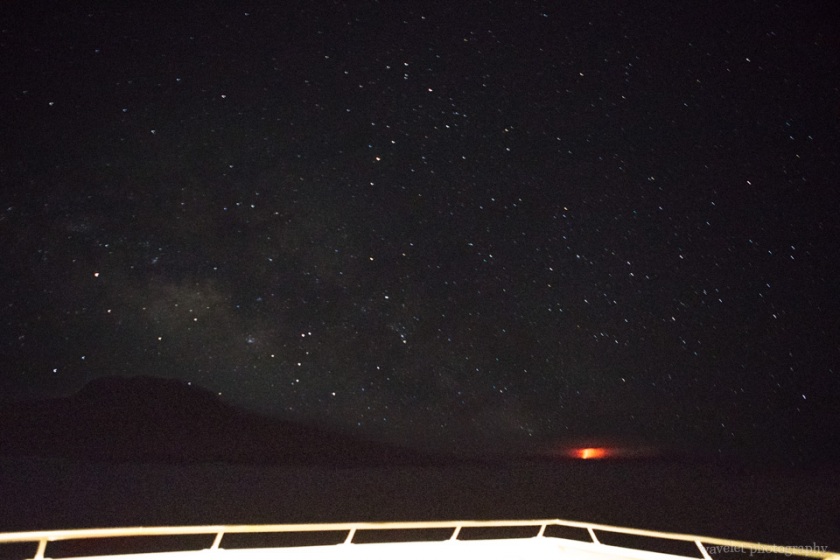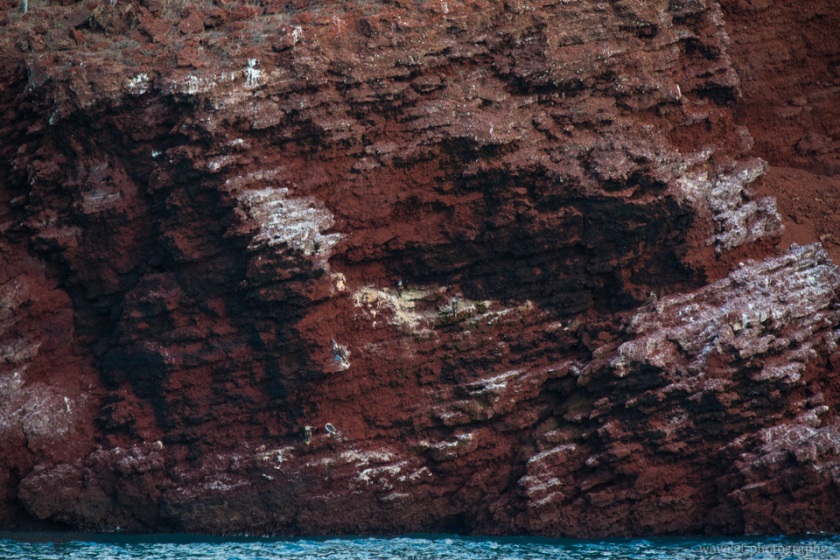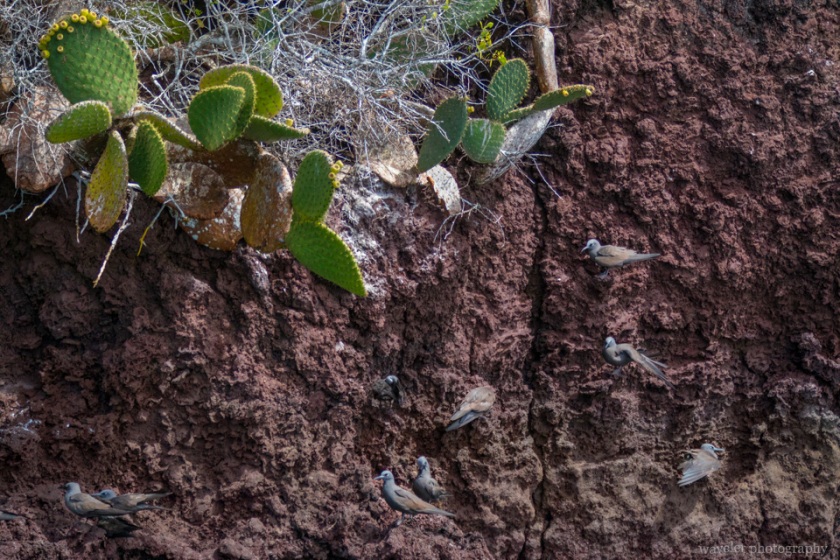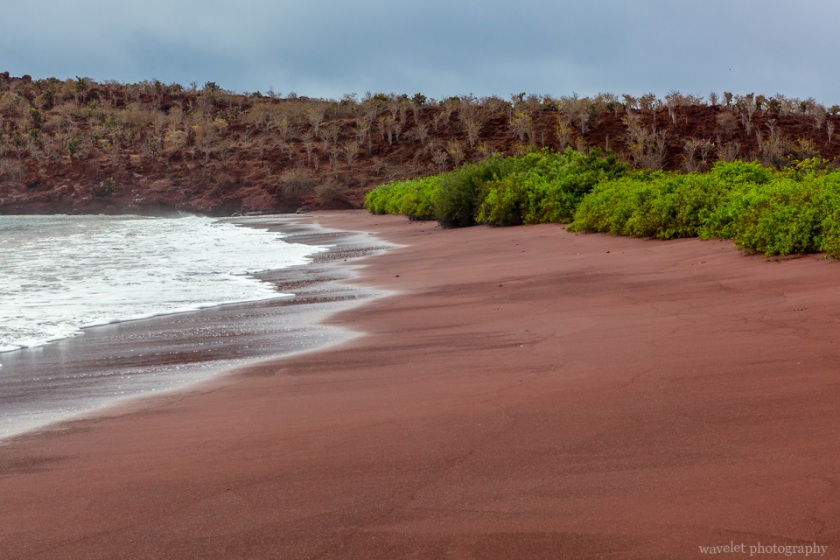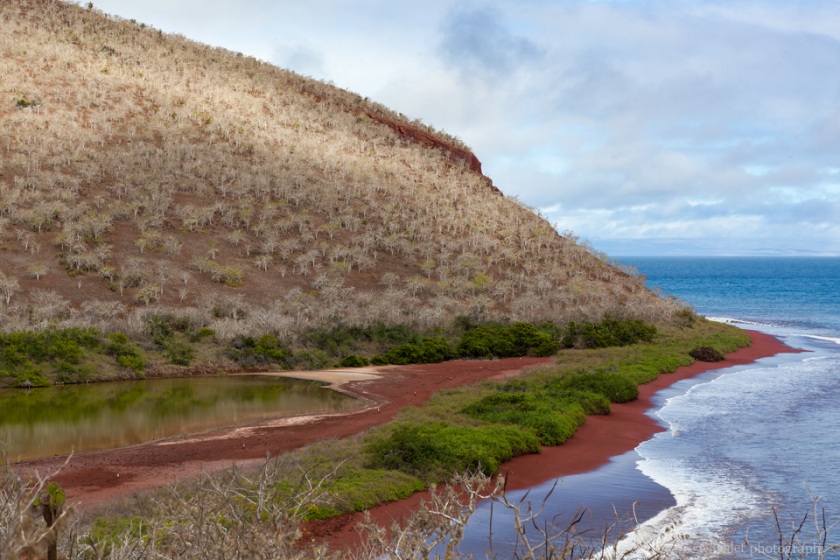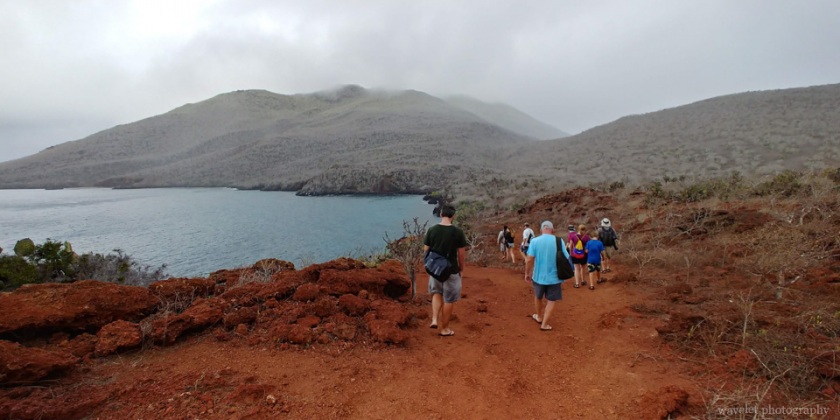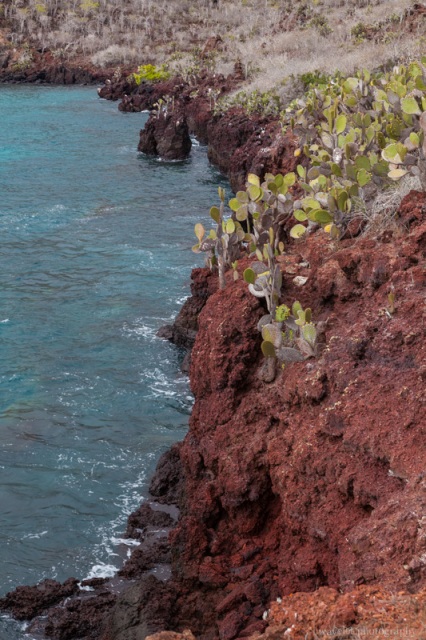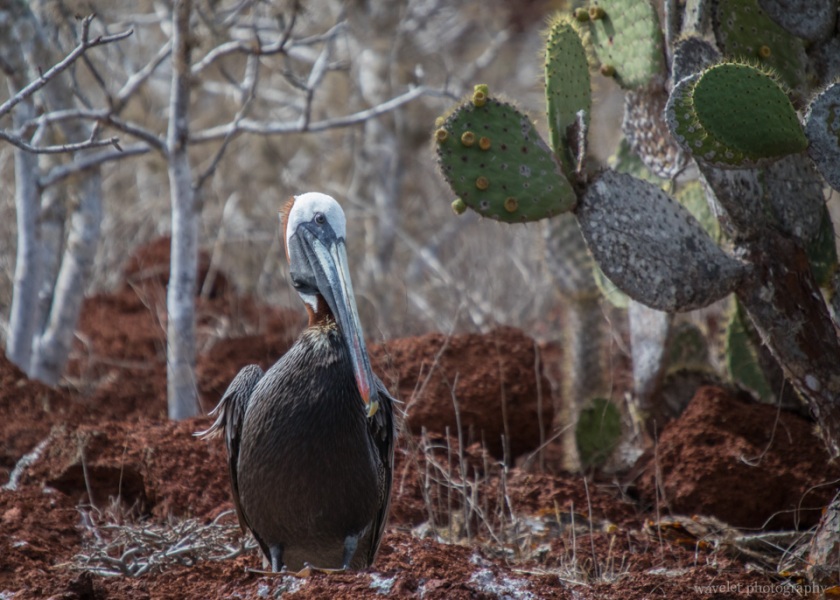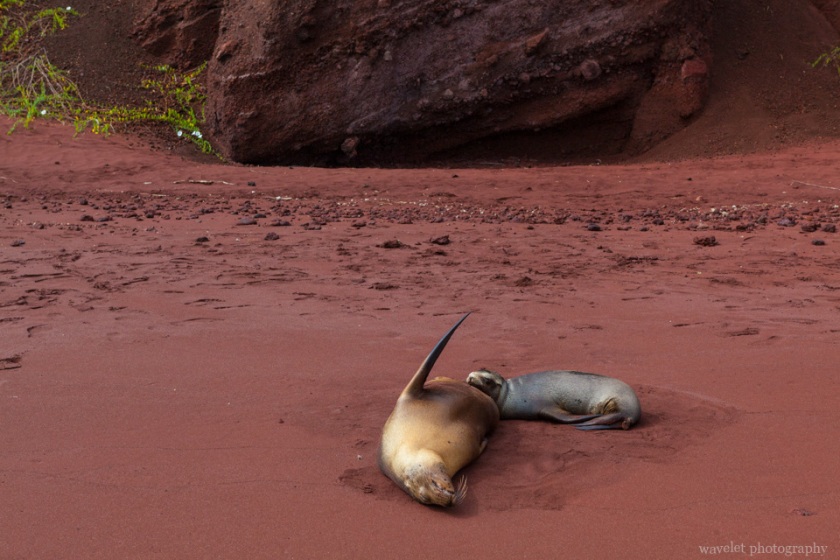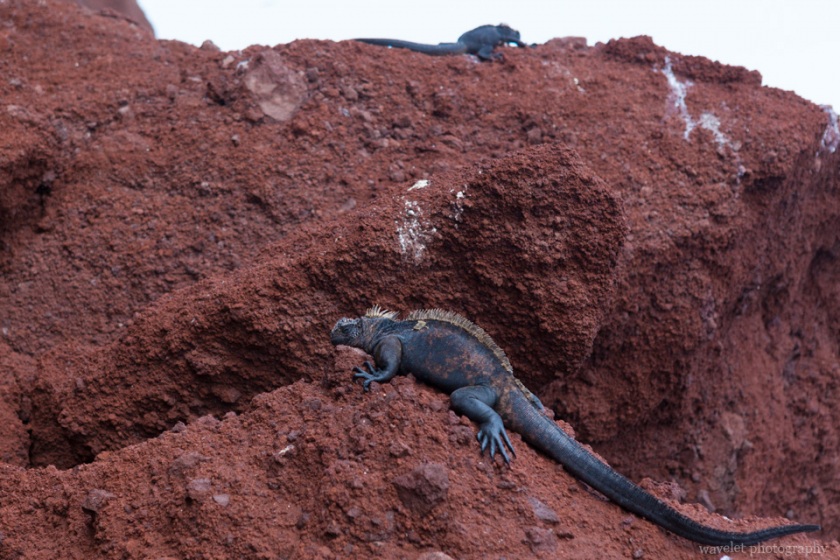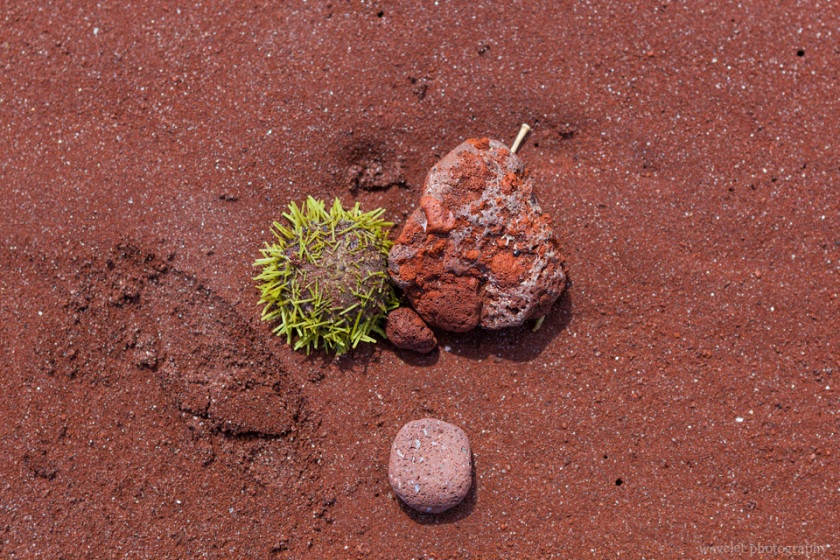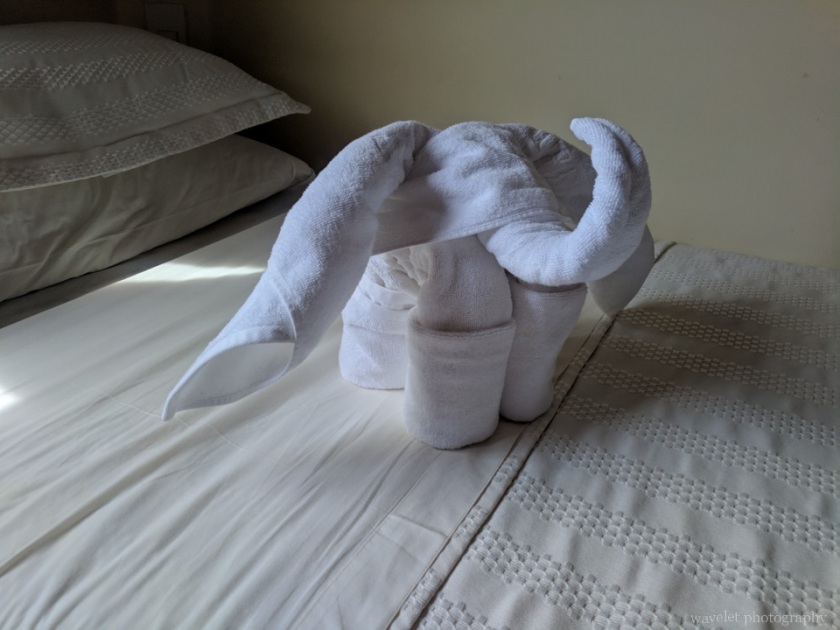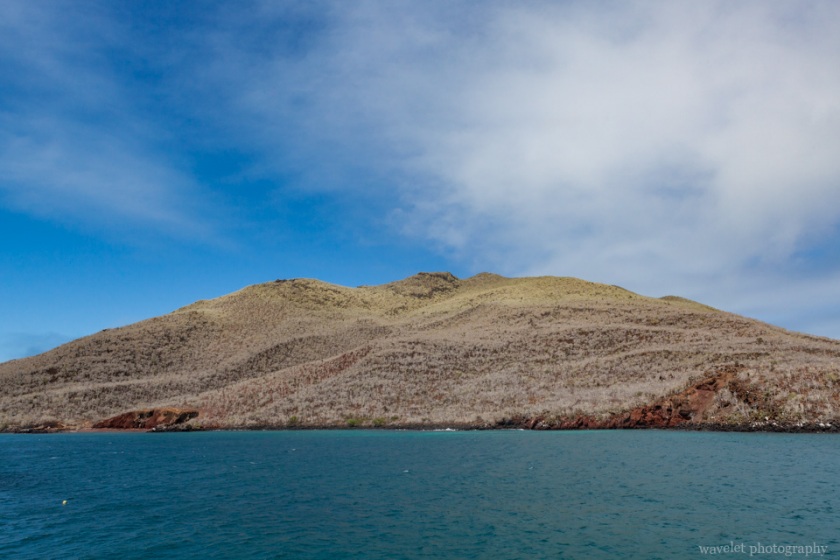Colorado Mountain Towns – Grand Mesa
2021.9.29
I had pondered about where to go after Telluride and finally decided to drive to Grand Junction, took a detour through the Grand Mesa. This will cover most of western Colorado.
We had planed to walk along the mountain rim in the early morning, but the weather was so gloomy that it was going to rain. It was only a little drizzling in the beginning, after a short walk, the rain got heavier. We had to run back to the hotel where I had lunch the day before.
The rain didn’t look like it was going to stop, so we had to take the gondola to the small plaza on the other side of the resort and buy some snacks for the trip.
After leaving the San Miguel Valley, it started clearing up and by the time we reached Ridgway, the sun was shining brightly. As the gateway to the San Juan Mountains, several railroads connecting the mining towns of Ouray and Telluride intersect here. Most of these railroads were abandoned in the 1950s and 1960s, and now Ridgway’s most famous landmark is the True Grit restaurant. The 1969 western film was filmed near Ridgway and Ouray, and won John Wayne an Oscar for best actor.
Black Canyon of the Gunnison (Black Canyon of the Gunnison) is a national park 12 miles west of Montrose. We decided to visit the park first and then go back to Montrose city for lunch.
Black Canyon is a canyon formed by the erosion of the Gunnison River. Compared to the Grand Canyon, Black Canyon is far less dramatic and colorful, but the Gunnison River has a much faster drop per mile than the Colorado River in this section of the valley. As a result, the mountains on both sides of the Black Canyon are much steeper, and even during the day time, the rock walls are mostly in the shadows where the sun does not shine, giving them the dark color, so it is the canyon named.
From the south entrance of the national park, there is only one road that runs along the south rim of the canyon. At each viewpoint, visitors can get out of the car and walk the trail to the cliff. The elevation here is over 8,000 feets. The cliffs are mostly gray and black but vegetation at the top showed the fall colors. The canyon is quite spectacular, with some places offering a panoramic view of the Gunnison River flowing out of the valley and into the plains, but after seeing more of it, it’s pretty much the same. We drove all the way to High Point at the end of the road, and then back the way we came.
We had a quick lunch at a Japanese restaurant in Montrose, you shouldn’t have much hope for Japanese food in a place like this.
As we continued north on Highway 50, we could already see the mountains ahead of us, with their flat tops stretching eastward. From Delta, I turned right and followed the navigation on a winding route that eventually took us to Highway 65 to the Grand Mesa.
About halfway to the Grand Mesa there is a small town called Cedaredge. On the side of the road is the Pioneer Town Museum, which commemorates the pioneers of the westward movement in the U.S. history. We arrived at 5 p.m. and the museum was already closed. We could only look outside at the three tall wooden barns and take a short break.
Soon after we left Cedaredge, the road rose with the mountain and the leaves gradually changed color from green to yellow. The top of the Grand Mesa is a layer of basalt nearly 300 feets thick, forming a vast flat top because it is harder and more resistant to erosions than the surrounding sediments. It is the largest flat-topped mountain in the world.
The summit is about 10,000 feets above sea level. Because of the high precipitation, more than 300 lakes of various sizes are formed. Near the top of the mountain there are still rich autumn colors, but at the top broad-leaved forest can no longer grow, only a pine forest exists. By the time we reached the summit it was 6pm. The ground around the lake was muddy, so we couldn’t go any deeper. There was no one around. The gloomy feeling was in stark contrast to the intense autumn colors ten minutes before.
It was a wild downhill ride after that. I remember a few years ago coming out of Aspen towards the other direction of I70, the mountains on both sides were treacherous, and the highway through the Rocky Mountains was an engineering marvel back the time when it was built.
Our hotel was located right next to the downtown street, simple, spacious and clean. When we walked out for dinner, it was already after 8pm. Many restaurants were ready to close. We had dinner at a Mexican restaurant called Las Marias. From the decoration to the food, it has the feel of a Mexican family restaurant. The taste is good and it’s very affordable. The owner is an old lady, I asked her for Maxican spicy sauce, and she confirmed with me that it’s what I wanted. I got two plates of it. It was quite spicy indeed!
It was almost 10 o’clock when I came out of the restaurant. The streets of downtown Grand Junction are clean and the stores look newly built, so there is no feeling of insecurity. There are many statues on the roadside, very walkable city!






































